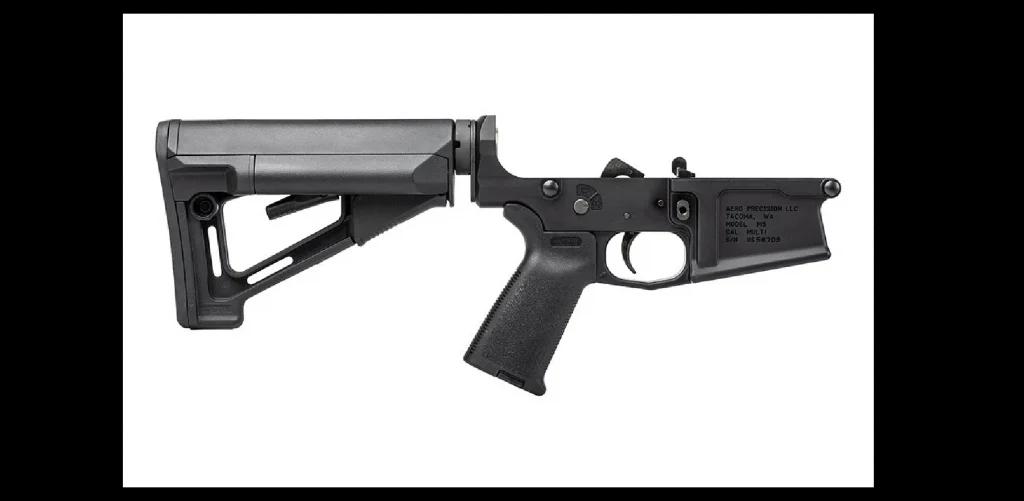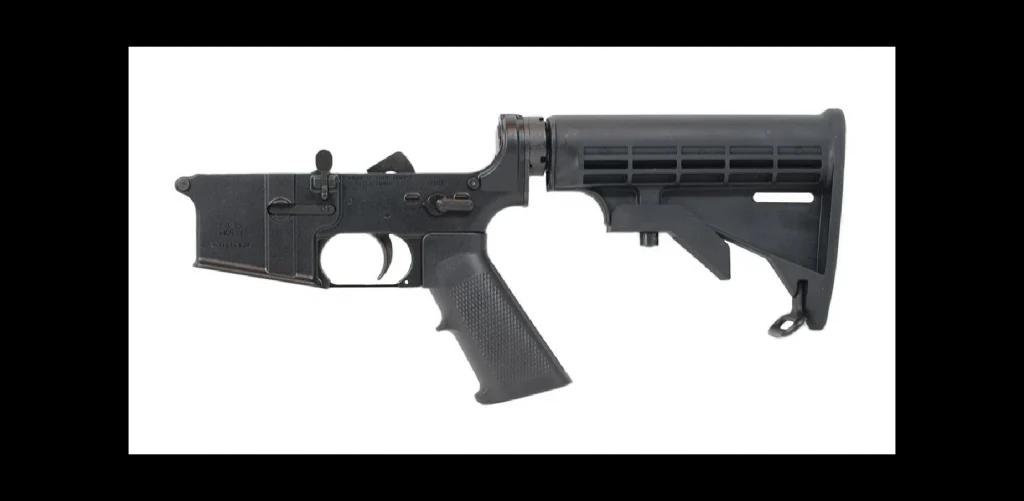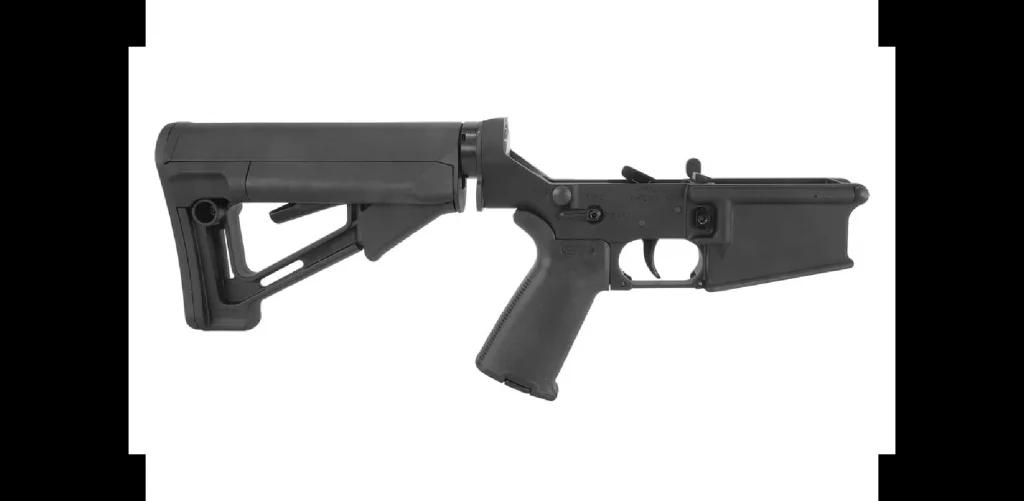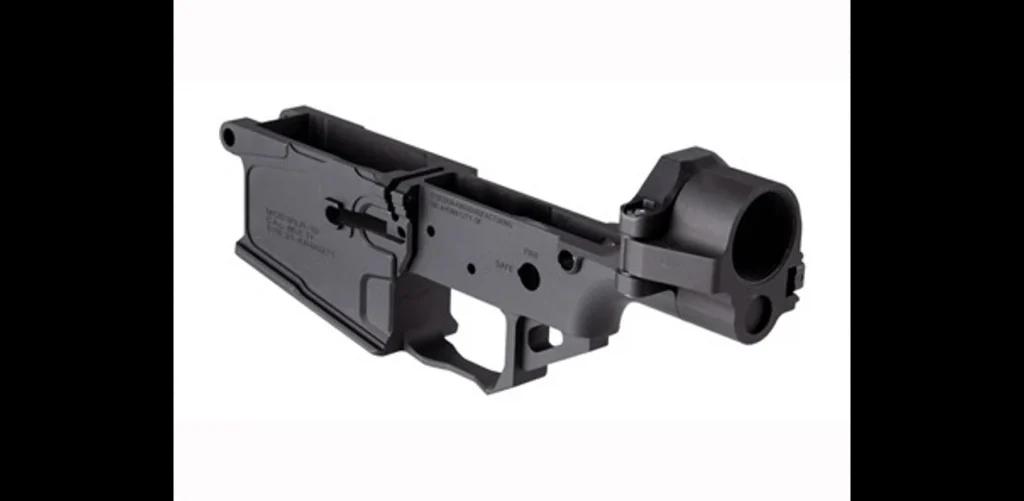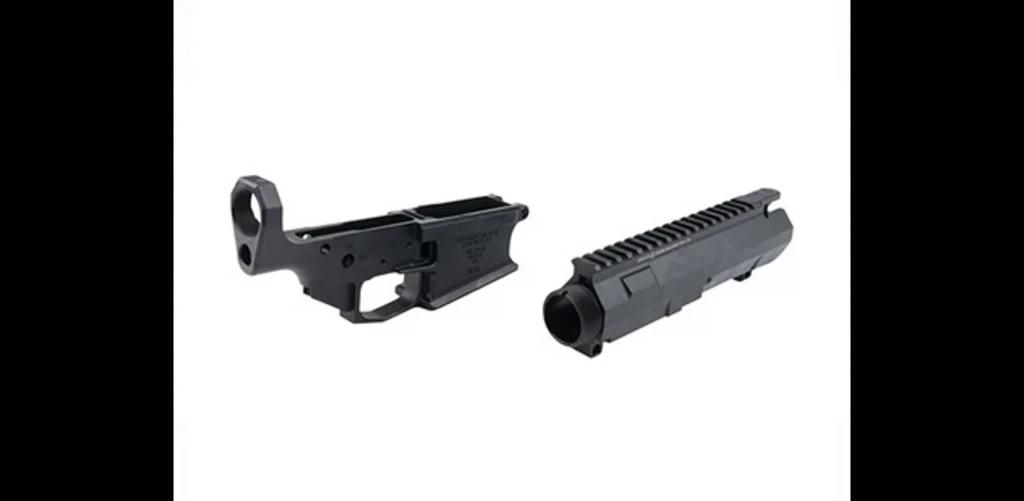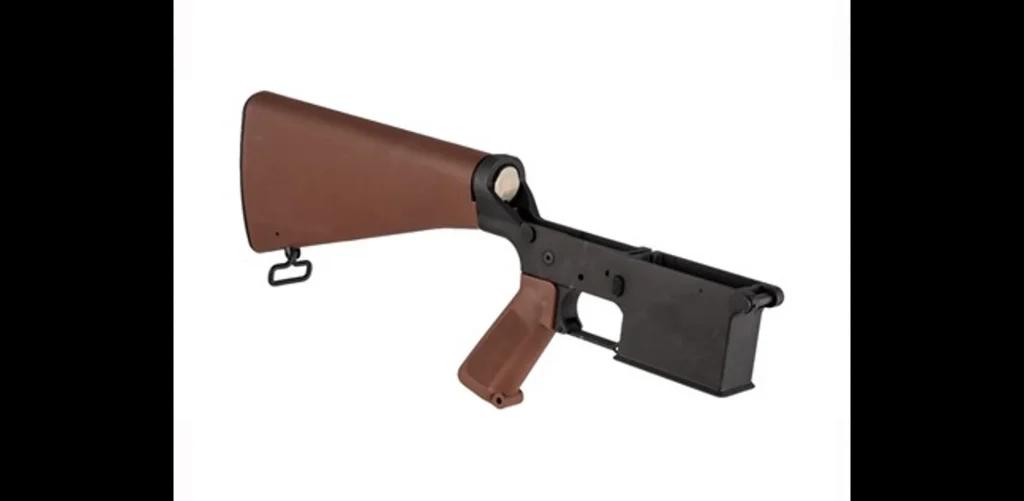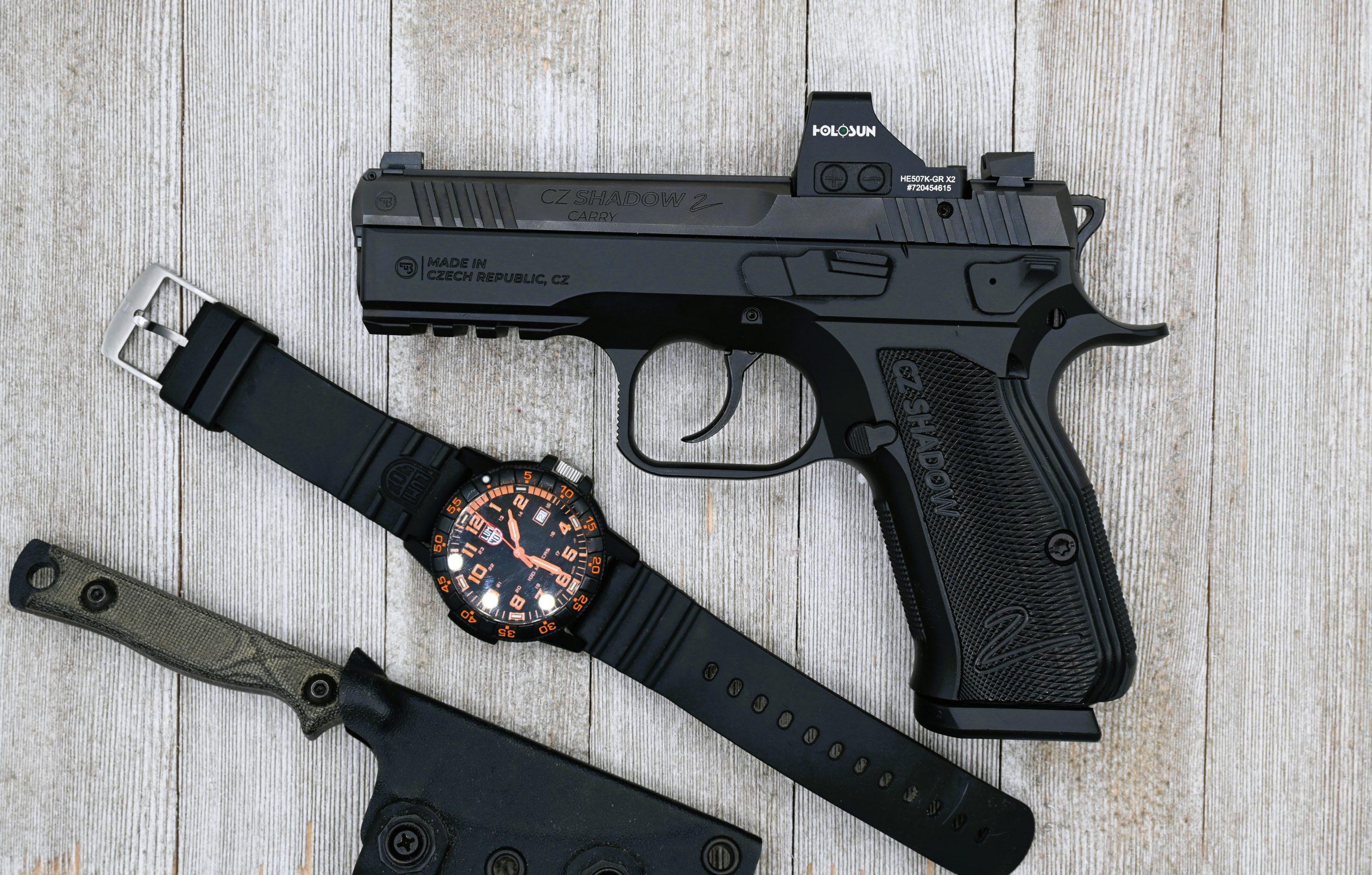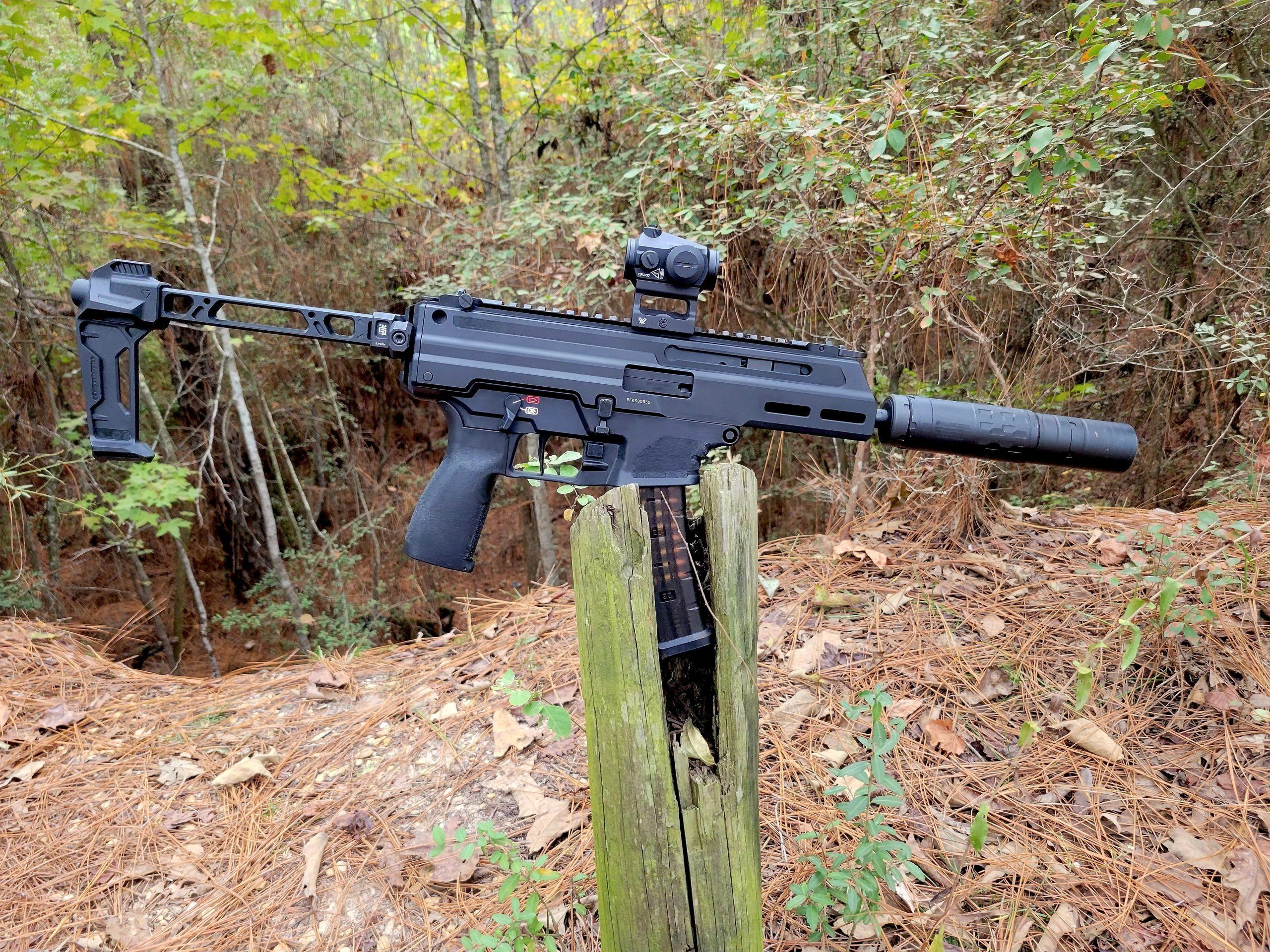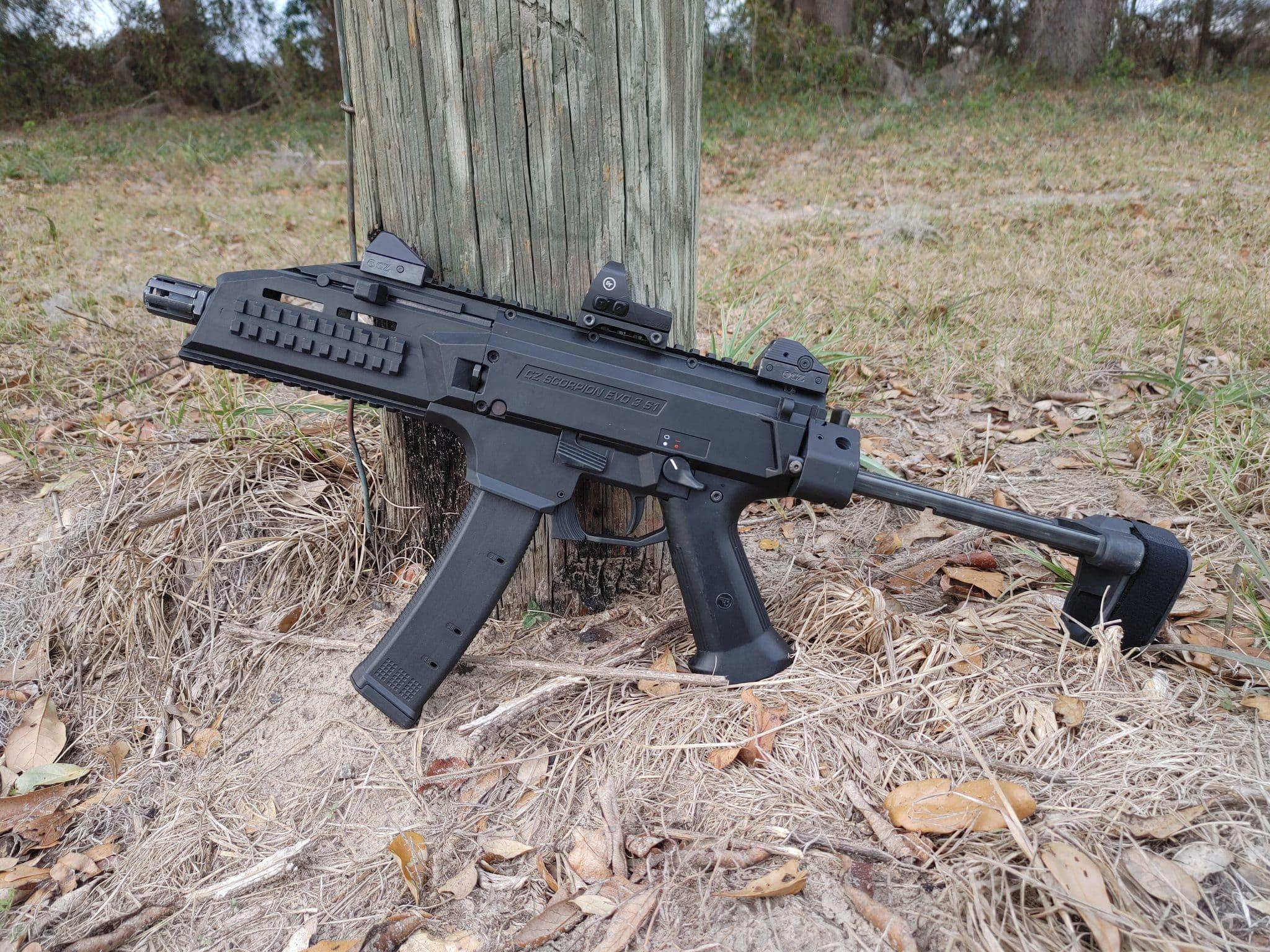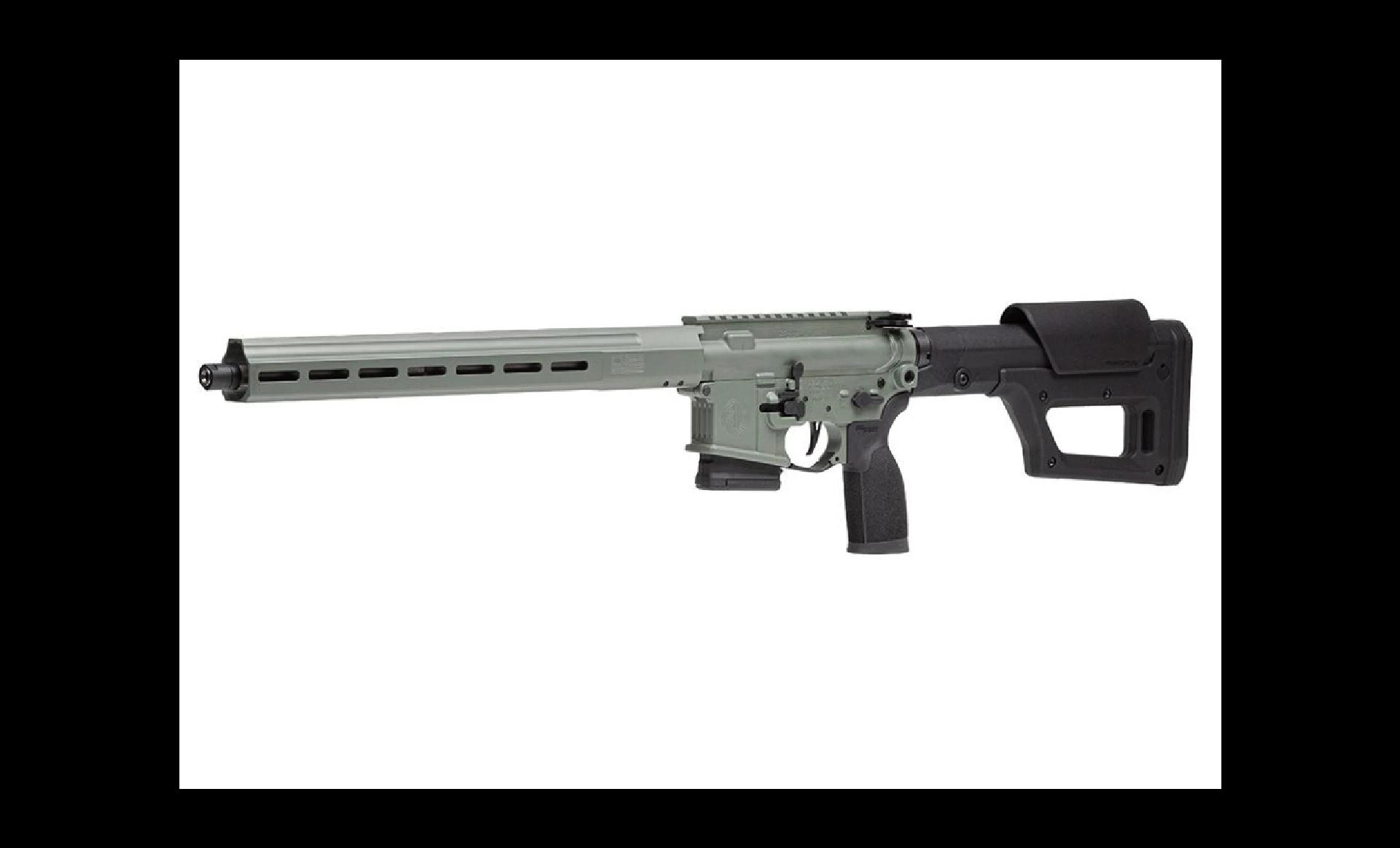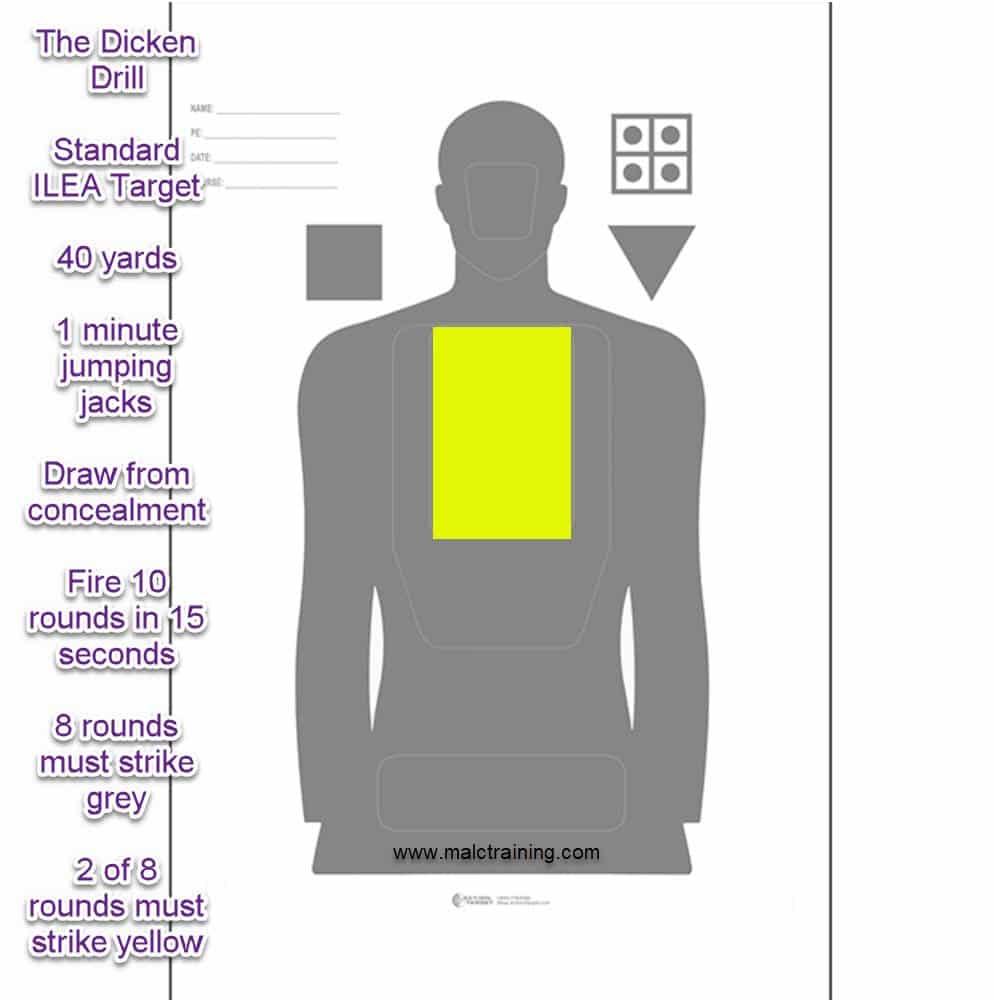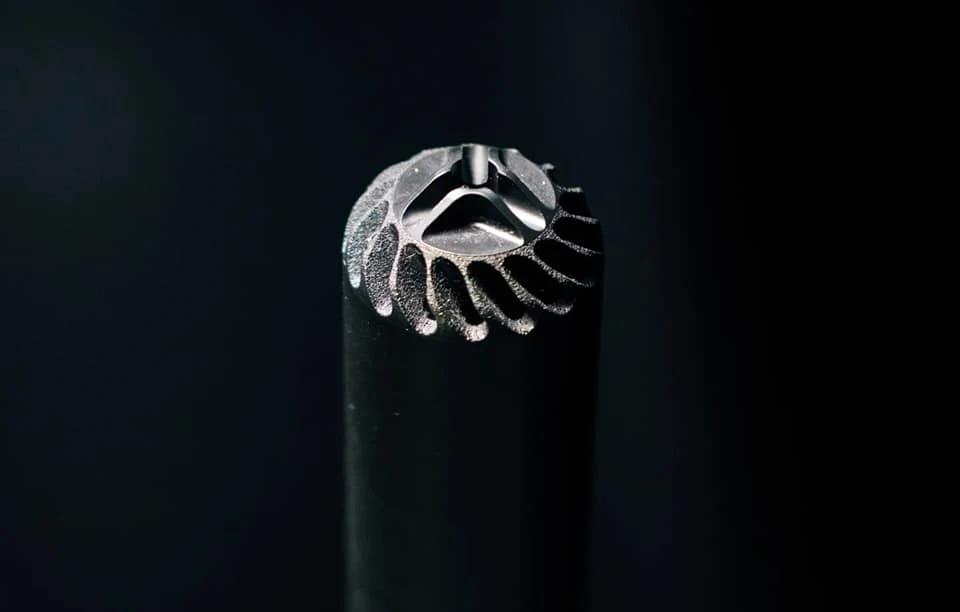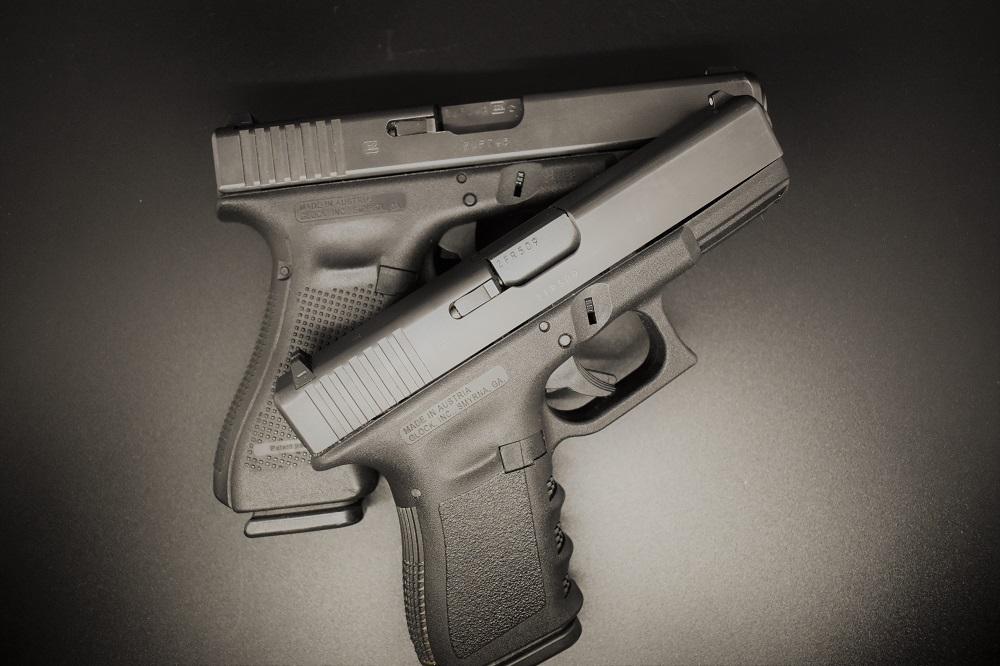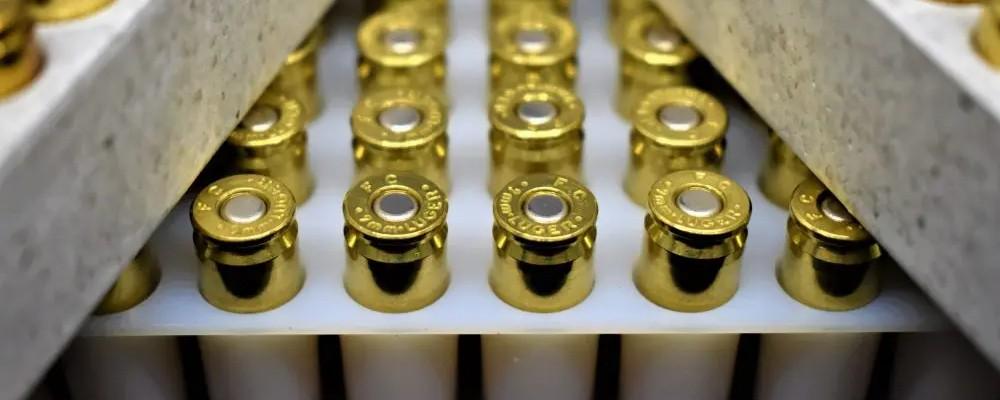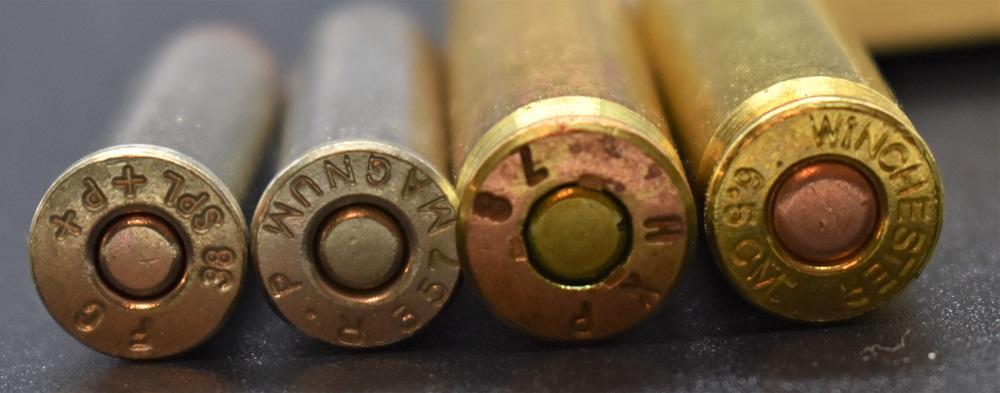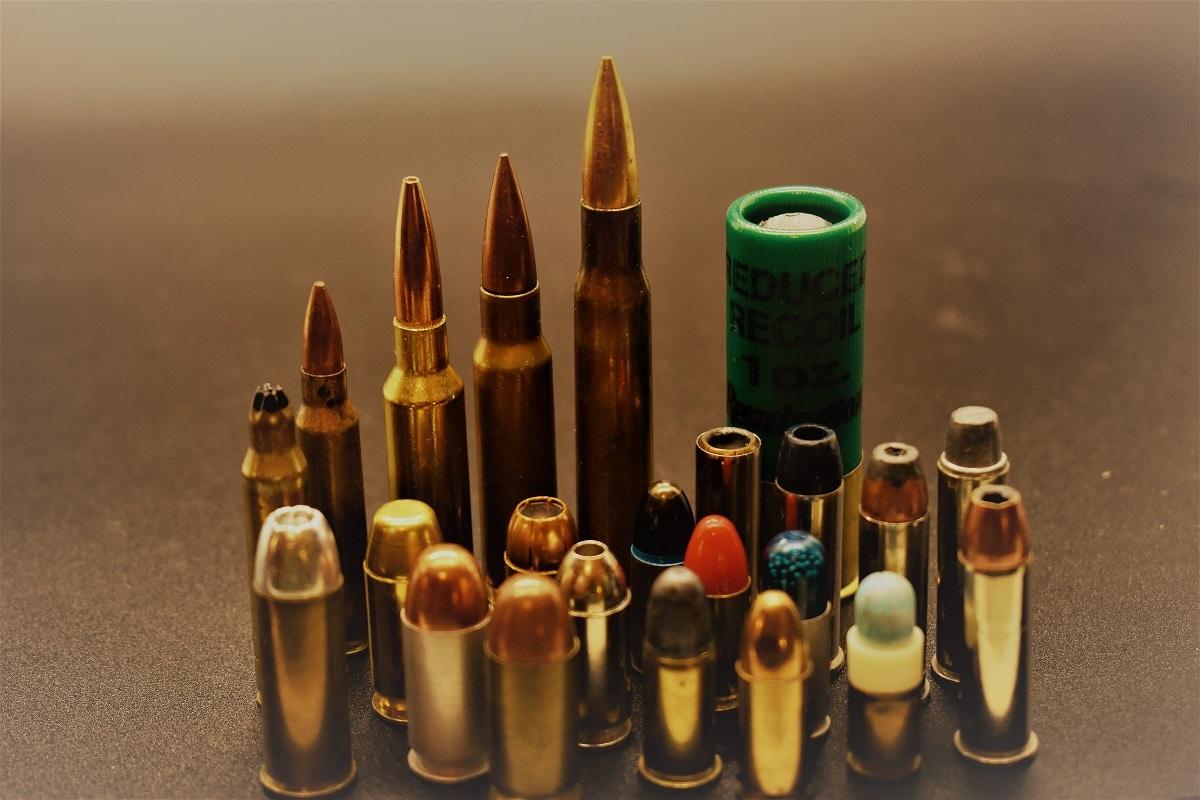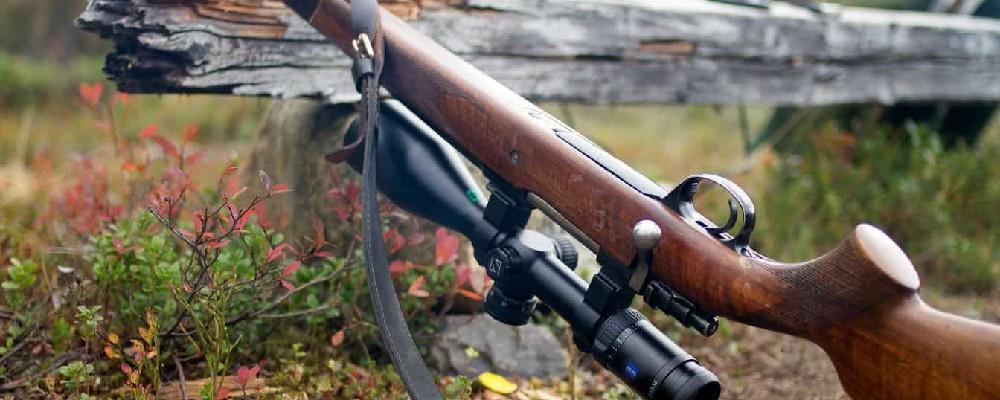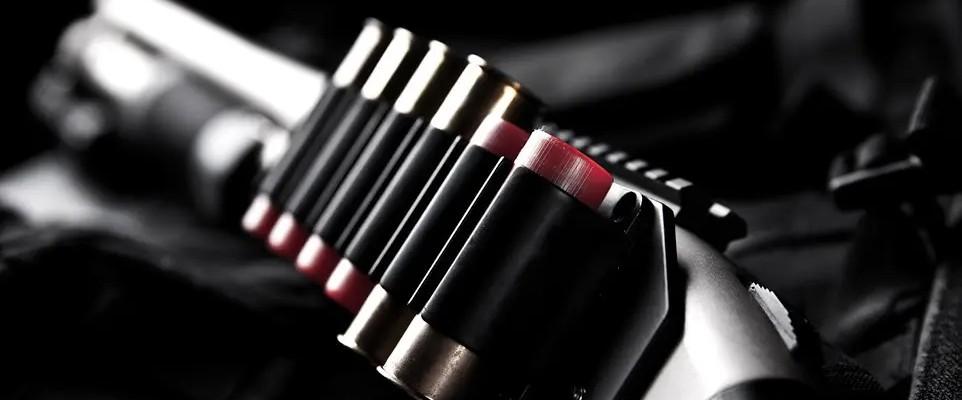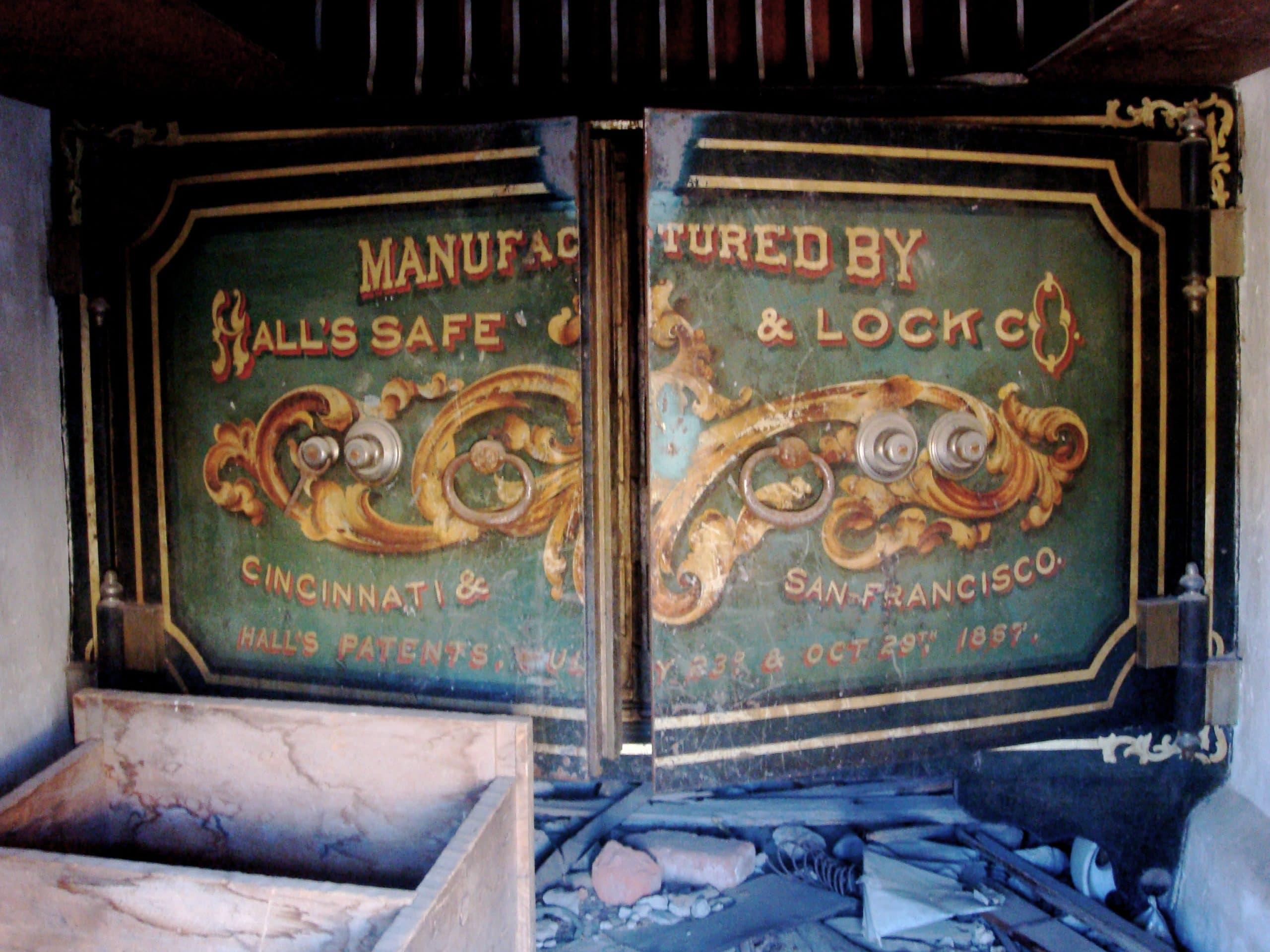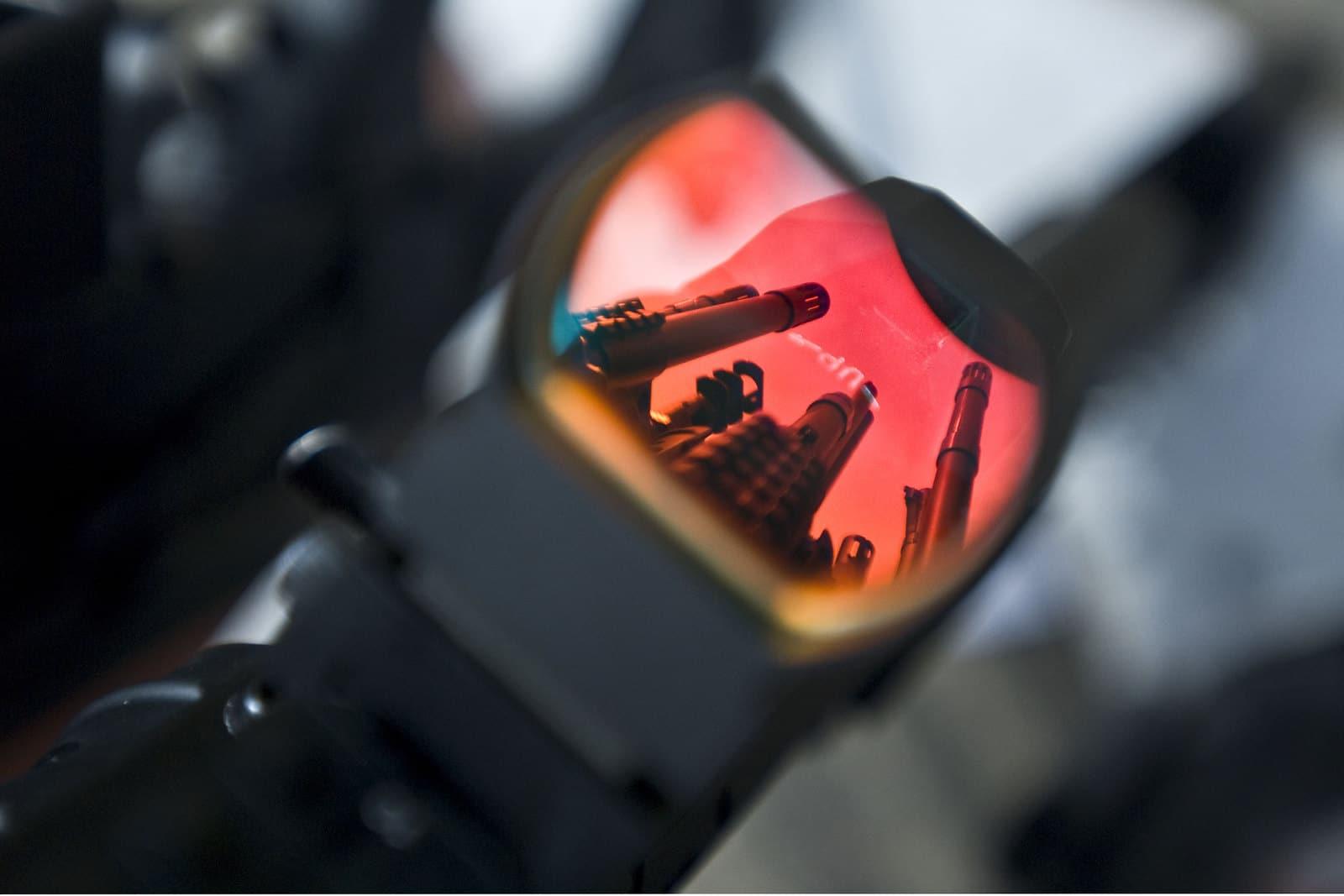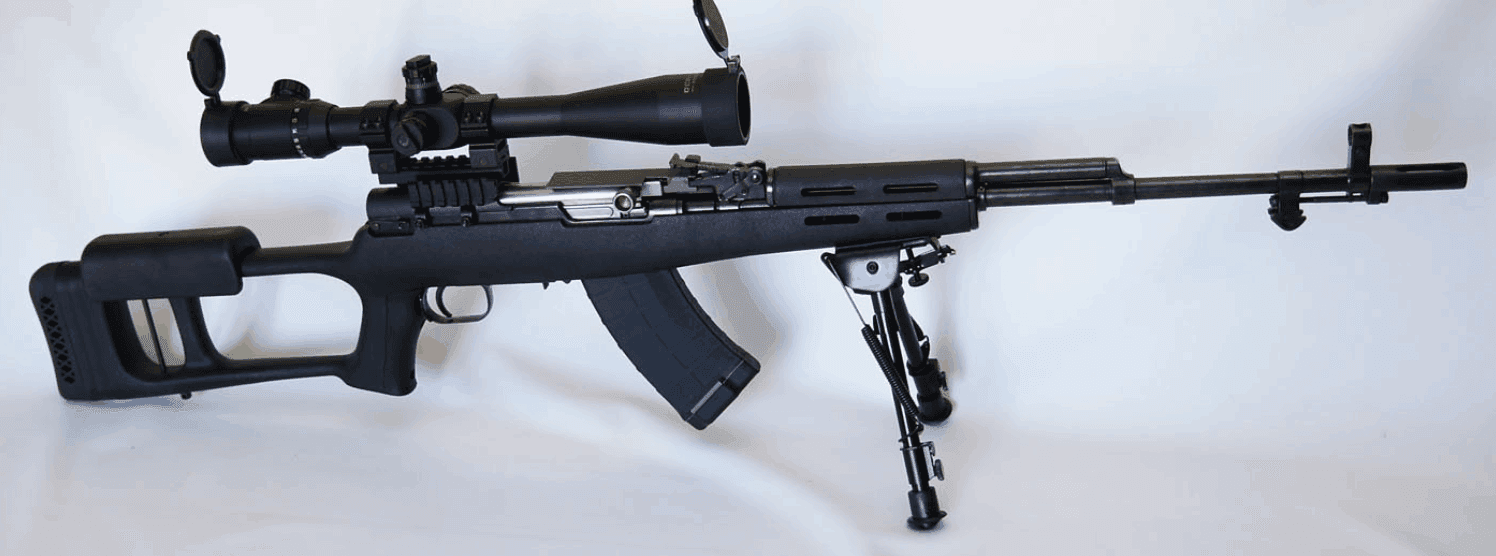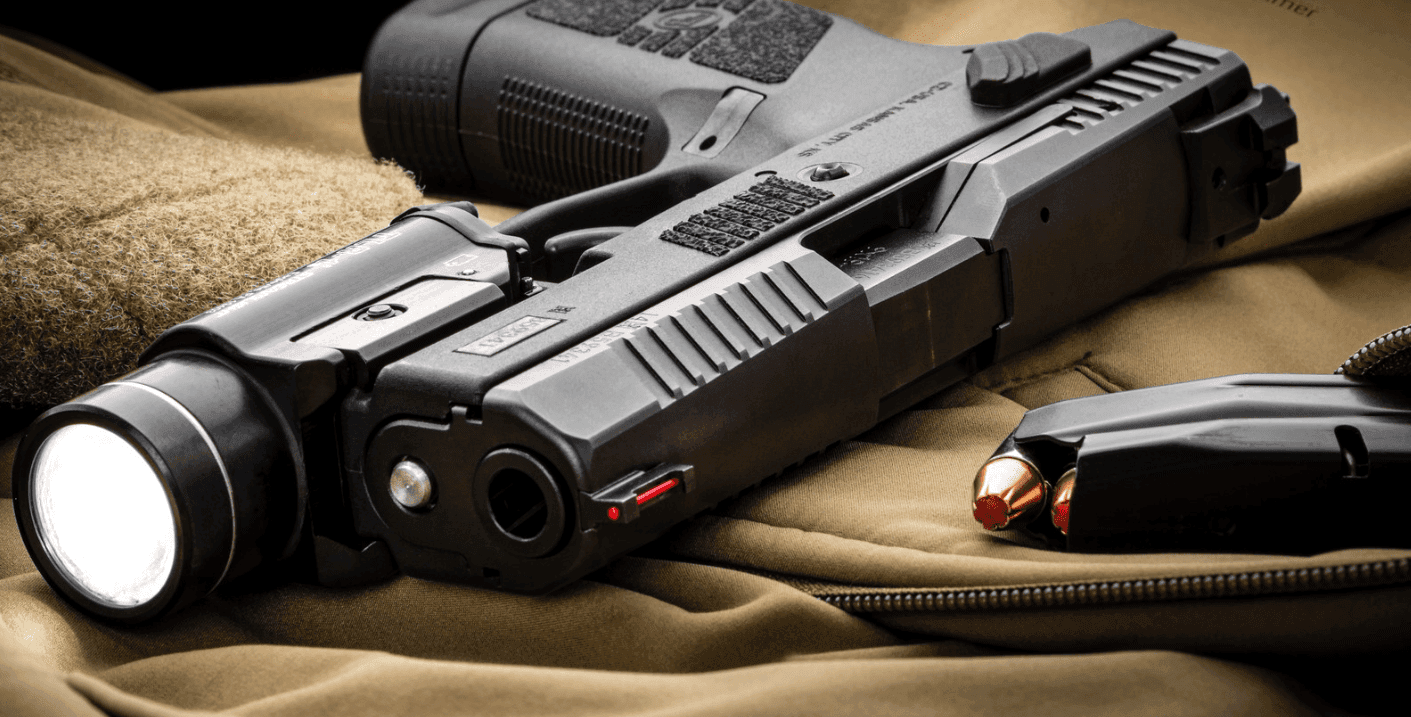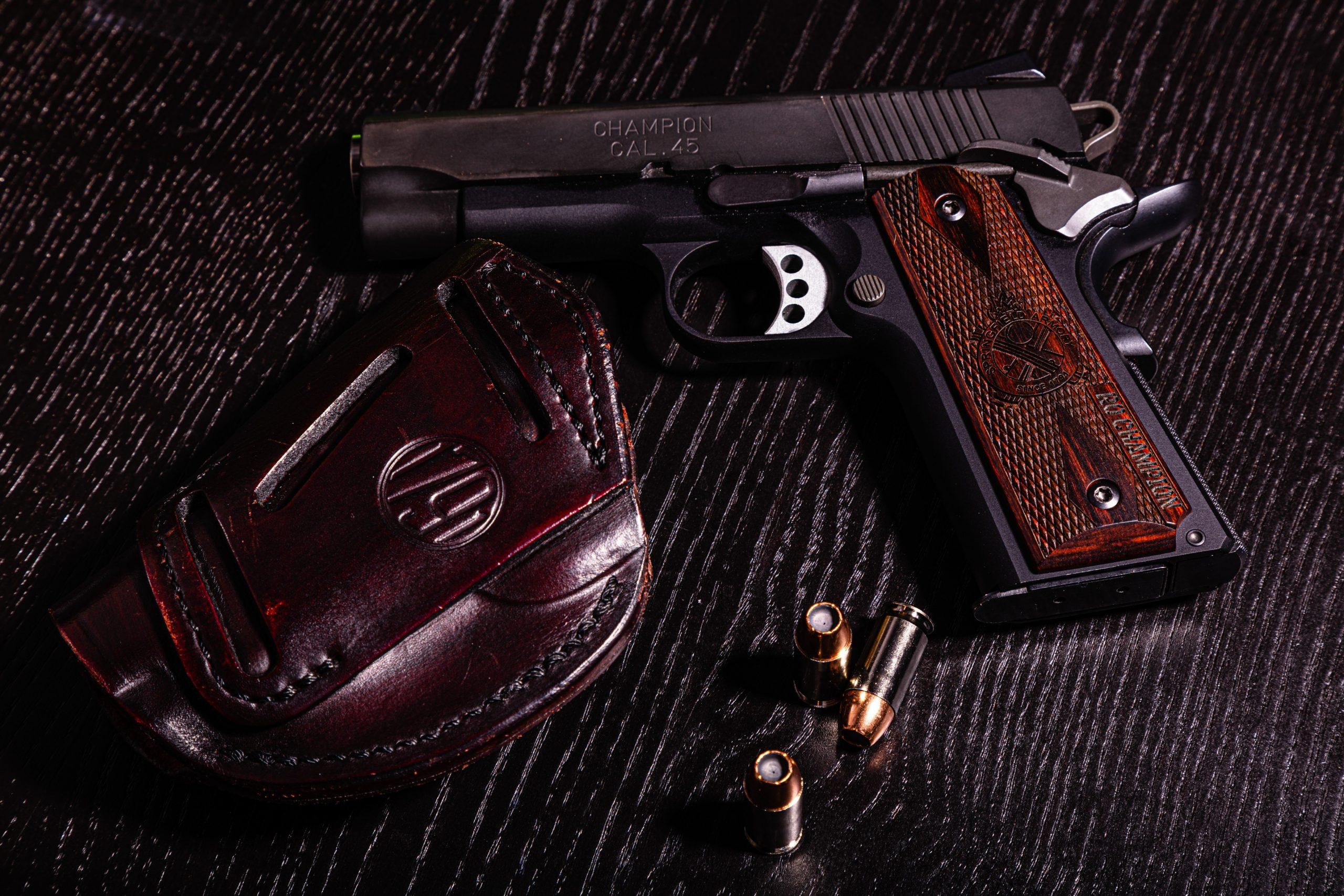The Ultimate Guide to AR-10 Lowers: History, Expertise, and Precision
Written By
Megan Kriss
Expert Contributor
Edited By
Michael Crites
Licensed Concealed Carry Holder
Share:
Products are selected by our editors. We may earn a commission on purchases from a link. How we select gear.
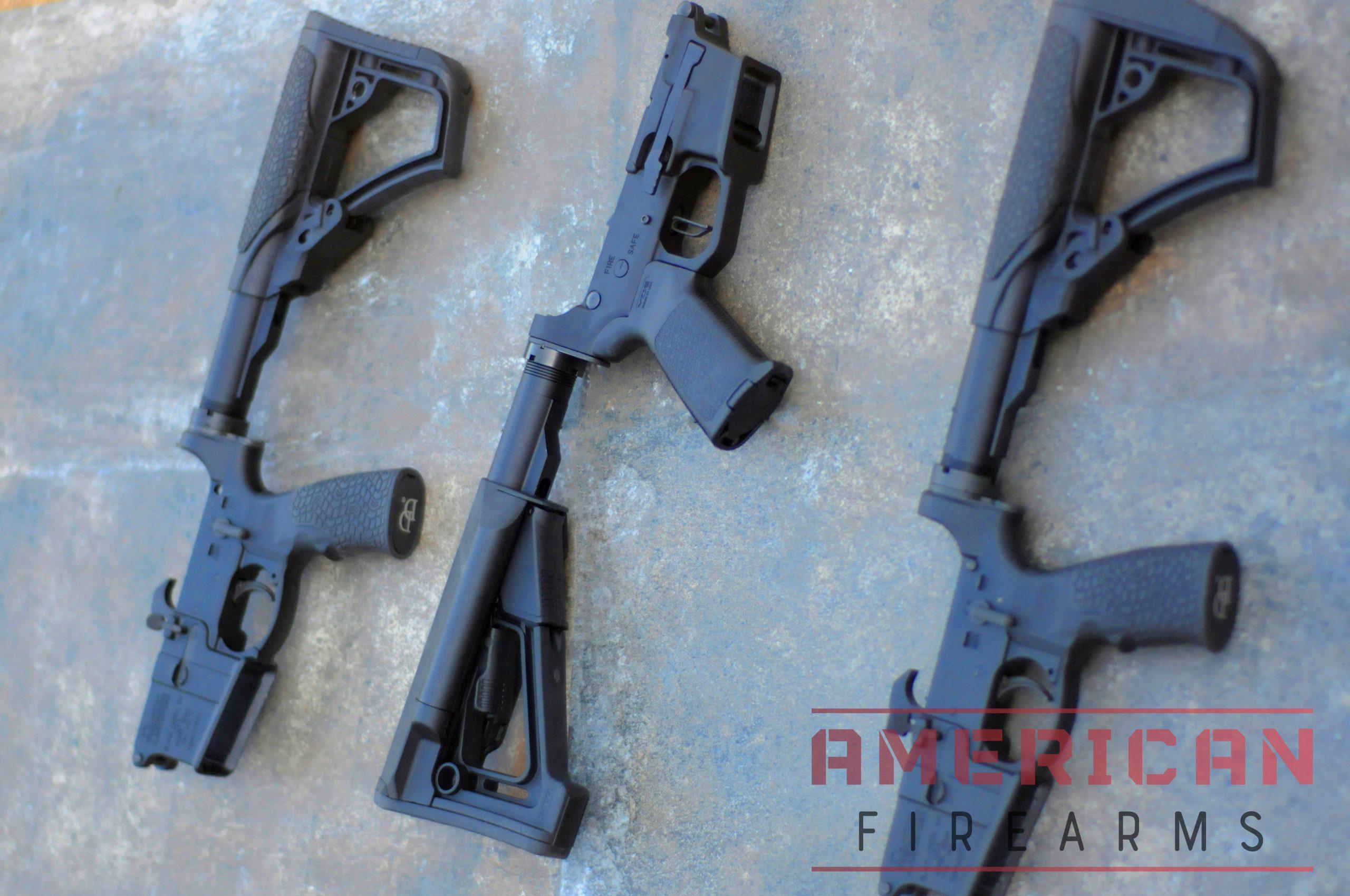
Updated
Aug 2025
Building an AR-10 from the ground up is a great way to save money, makes for a fun project, and is the best way to make sure you end up with something that really fits your needs once the rifle is finished and in your hands. But just like all things AR-10, the lower receiver selection process is more complex than its AR-15 cousin.
After coordinating safety protocols at the National Rifle Championships in Camp Perry and building precision rifles for three decades, I’ve learned that the AR-10 platform demands careful component selection. Unlike AR-15s, which benefit from military standardization, AR-10 lowers exist in a world of competing patterns and proprietary modifications.
Join us as we embark on this journey, retracing the footsteps of Eugene Stoner, uncovering lesser-known historical anecdotes, and equipping you with the knowledge to make an informed decision for your next AR-10 build. Whether you’re a seasoned gunsmith or a curious enthusiast, there’s a wealth of information waiting to be discovered.
In This Article
AR10 Lower Comparison
The foundation of every AR-10 build starts with the lower receiver. Unlike AR-15s, where mil-spec standardization creates broad compatibility, AR-10 lowers live in a world of competing patterns and proprietary specifications. Getting this choice right determines your entire build’s compatibility ecosystem.
Below is my list of the best AR-10 lower receivers based on extensive testing, real-world performance, and long-term reliability. Click on the name to head to the product page, read reviews and check prices.
| Product | Selection | Price | Pattern | Key Features |
|---|---|---|---|---|
Best Overall | $189 | DPMS High | Threaded pins tension screw flared magwell | |
Budget Pick | $159 | DPMS Gen 2 | Enhanced BCG compatibility value pricing | |
Original Pattern | $227 | Armalite | Authentic design mil-spec compatibility | |
Folding Pick | $239 | DPMS | Integrated folding mechanism compact storage | |
Best Set | $498 | DPMS | Matched upper/lower premium anodizing | |
Historical Pick | $372 | Armalite Clone | Retro reproduction wood furniture compatible |
Why You Should Listen to Us
I’ve been shooting various rifles built on the AR-10 platform for almost a decade now, and in that time, I’ve gotten my hands on just about every one of the most popular models out there.
From hunting to competition, to just plinking at the range, these rifles can do it all, and do it well. And it all starts with the lower.
I’ve built several rifles from the ground up, starting with the lower receiver, so I’ve developed a good idea of what works and what doesn’t, and how to find high-quality, well-machined work without spending a fortune in the process.
So let’s take a look at the best options out there right now.
How We Tested
Build Quality & Fitment
We conduct precision measurements using digital calipers to verify critical dimensions including pivot pin holes, takedown pin holes, trigger pocket, and buffer tube threading.
Assembly & Installation
We time the complete assembly process for each lower using standard mil-spec lower parts kits, noting any difficult installations, tight tolerances, or compatibility issues.
Live Fire Evaluation
We build each lower into a complete rifle configuration and fire a minimum of 500 rounds of mixed .308 Winchester ammunition (match grade, hunting loads, and surplus) to evaluate trigger function, magazine compatibility, and overall system reliability through various shooting positions.
Durability Assessment
We evaluate construction materials, finish quality, and manufacturing tolerances, then conduct stress testing by assembling and disassembling each lower a minimum of 5 times to assess pin hole wear, trigger pocket integrity, and overall structural soundness.
More on our testing process
AR10 Lower Receiver Reviews
1. Aero Precision M5 AR10 Lower
| Specification | Details |
|---|---|
Material | 7075-T6 Forged Aluminum |
Weight | 12.8 oz (stripped) |
Pattern | DPMS High Profile |
Finish | Type III Hardcoat Anodizing |
Trigger Pocket | Mil-spec dimensions 0.154" pin holes |
Buffer Thread | 1.375" × 16 TPI |
Magwell | Flared design beveled edges |
Special Features | Threaded bolt catch pin tension screw integrated trigger guard |
Compatibility | M5 ecosystem DPMS High Profile uppers |
MSRP | $189 |
First up, we have a cult favorite, the Aero Precision M5. Aero Precision is a bit of an industry standard that manufacturers lowers for a number of other OEMs, and they have some of the best machining quality in the business, which makes them an easy recommendation when talking about the best AR10 lowers in the game.
They also really cater to builders, and they have everything from stripped lowers to partially assembled lowers to fully-finished complete lowers that are ready to go right out of the box.
Plus, additions like their threaded tension screw are sweet touches you don’t find elsewhere at this price point.
They also have a variety of finishes and builders kits available in various Cerakote colors/designs. These kits are great if you want matching upper and lower receivers, especially if you want something in a specific color or pattern and their rugged design.
The lower itself is machined incredibly well from aircraft-grade aluminum and takes all standard AR 308 parts, so you can install whatever fire control group, bolt catch, magazine release, and AR-15-style grip that you want.
Test Notes:
Build Quality & Fitment The M5 had exceptional dimensional accuracy during our precision measurement protocol. Critical dimensions measured within ±0.002″ of published specifications, with pivot and takedown pin holes showing perfect concentricity. When tested with four different DPMS High Profile uppers (Aero, Brownells, Fulton Armory, and Rainier Arms), the M5 produced consistent lockup with minimal play across all combinations.
The integrated tension screw system proved highly effective, eliminating the 0.008″ of play we measured with a Brownells upper before adjustment. Post-adjustment, upper-to-lower movement measured less than 0.001″ in all directions.
Assembly & Installation Assembly time averaged 32 minutes using a standard Aero M5 lower parts kit, significantly faster than traditional designs due to the threaded bolt catch pin. The elimination of roll pin installation not only saved time but prevented the finish damage we’ve seen with hammer and punch assembly methods.
The threaded takedown pin detent system worked flawlessly, though we recommend using blue Loctite during assembly. All standard mil-spec components fitted without modification, and the integrated trigger guard provided excellent clearance for both standard and enhanced triggers.
Live Fire Evaluation Through 500 rounds of mixed ammunition (Federal Gold Medal Match 168gr, Winchester white box 147gr, and PMC Bronze 147gr), the M5 lower performed flawlessly. We experienced zero malfunctions related to the lower receiver, with consistent magazine drops and reliable bolt hold-open function across multiple magazine types (Magpul PMAG 20 LR/SR, Brownells, and KAC).
The flared magwell design facilitated noticeably faster magazine changes during our timed reload drills, averaging 0.3 seconds faster than standard geometry lowers in our comparison.
Durability Assessment After 75 complete disassembly/reassembly cycles, the M5 showed minimal wear. The Type III anodizing remained intact with only minor witness marks on the takedown pin holes. The threaded bolt catch pin showed no signs of loosening or thread damage. Most importantly, dimensional measurements remained consistent throughout testing, indicating excellent long-term stability.
Verdict: The Aero M5 represents the best balance of features, quality, and ecosystem support available today. The threaded pin system and tension screw justify the modest premium over basic forged lowers, while the extensive M5 parts ecosystem ensures long-term upgradeability.
2. Palmetto State Armory PA-10 Lower Receiver
| Specification | Details | |
|---|---|---|
Material | 7075-T6 Forged Aluminum | |
Weight | 13.1 oz (stripped) | |
Pattern | DPMS Gen 2 Variant | |
Finish | Type III Hardcoat Anodizing | |
Trigger Pocket | Standard mil-spec dimensions | |
Buffer Thread | 1.375" × 16 TPI | |
Magwell | Standard geometry | |
Special Features | Enhanced BCG compatibility integral trigger guardCompatibility | PA-10 ecosystem most DPMS components |
MSRP | $159 |
Palmetto State Armory have carved out a niche for themselves as the lords of the budget AR market. They, somehow, sell uppers, lowers, and complete rifles for well under almost any other manufacturer that’s worth a damn, and I love it.
I love my PA-10 rifle, which I built from the ground up, I might add. I started with a PA-10 lower receiver set and added parts that suited my overall goal for the rifle. I’ve never had an issue with performance, quality, or feeling like I got a good value for my money.
At the end of the day, the lower in an AR platform is not a high-stress component. It’s not going to explode on you, and it isn’t really going to fail in most cases unless you take a hammer to it or do something equally silly.
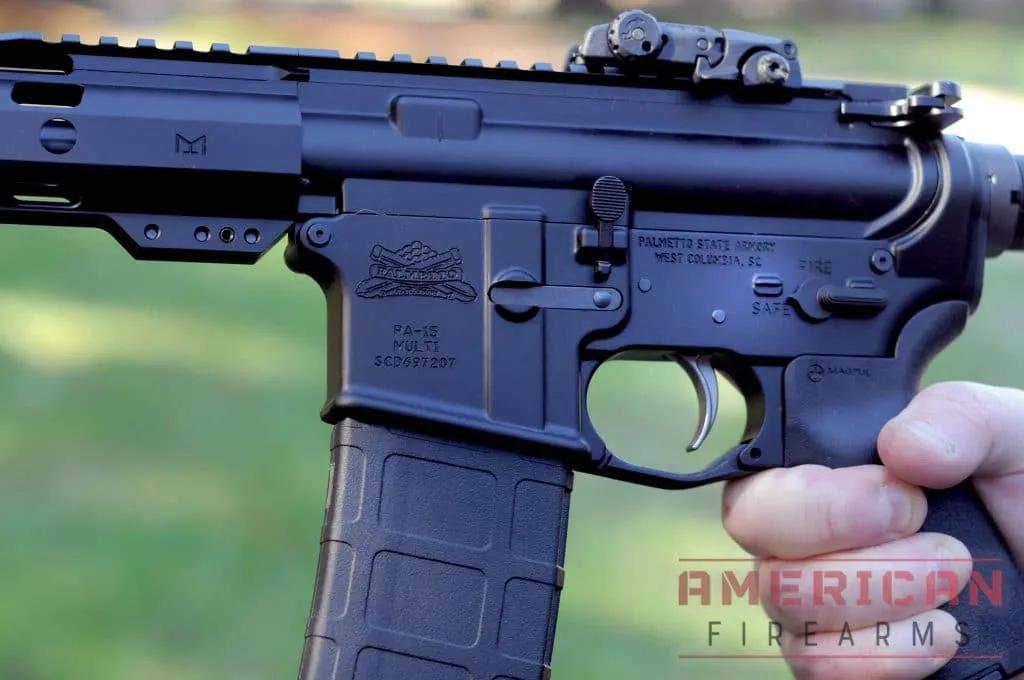
The exception is the ears the pivot pin goes through to lock the upper and lower together, as these can be kinda fragile. Still, though, don’t use a framing hammer to put your gun together, and don’t use the gun as a hammer, and you’re probably not going to break your receiver.
If you’re looking for a budget-friendly receiver set option that doesn’t suck, this is the one to go with. We’ve tested the snot out of these lowers and have two rifles built on them sitting in our safe right now.
They work and, for the price, they’re awfully hard to beat.
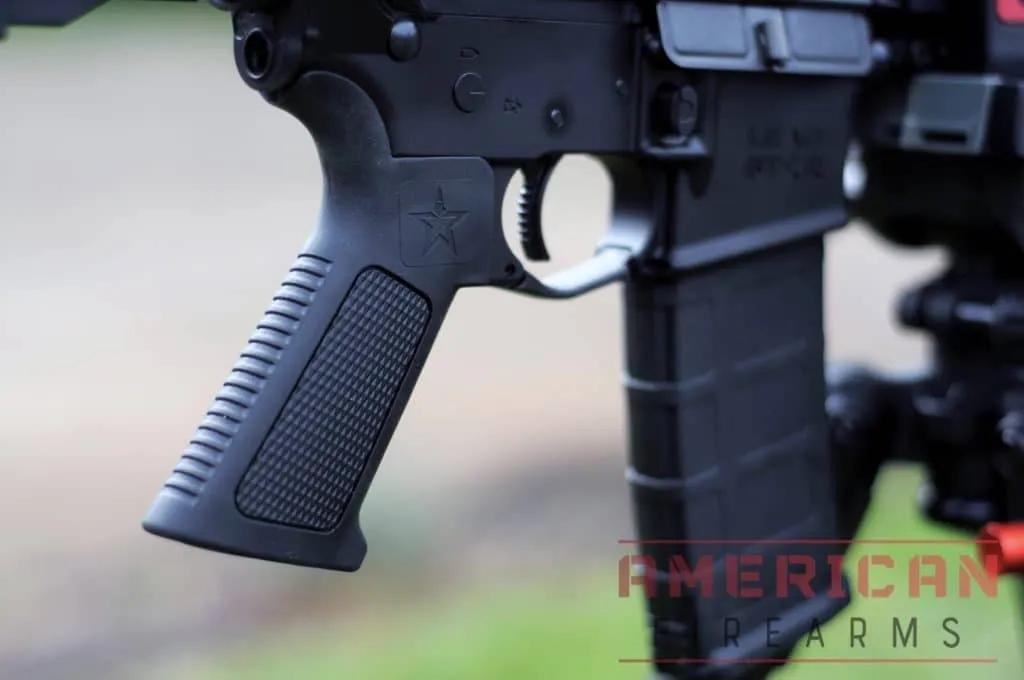
Test Notes:
Build Quality & Fitment The PA-10 Gen 3 demonstrated solid dimensional accuracy for its price point, with measurements falling within acceptable mil-spec tolerances. Critical dimensions varied ±0.005″ from specification, which while not precision-grade, proved adequate for reliable function. Testing with three PSA uppers and one Aero M5 upper revealed good compatibility within PSA’s ecosystem, though the Aero upper exhibited 0.012″ of play without shimming.
The Gen 3 improvements were immediately apparent during BCG compatibility testing. Unlike earlier PA-10 generations that required specific bolt carriers, the Gen 3 functioned reliably with BCGs from Aero, Brownells, and Toolcraft without modification.
Assembly & Installation Standard assembly using a PSA lower parts kit required 48 minutes, typical for traditional roll pin installation. The integrated trigger guard provided adequate clearance, though tight tolerances required minor fitting with some aftermarket triggers. We noted that the magazine release required an extended version for optimal function due to the receiver’s thickness.
The bolt catch installation proved challenging, requiring careful roll pin alignment to prevent finish damage. This reinforces why we recommend this lower primarily for budget-conscious builders willing to invest time in careful assembly.
Live Fire Evaluation Through 500 rounds of testing, the PA-10 Gen 3 performed reliably with zero lower-related malfunctions. Magazine compatibility proved excellent with PSA and Magpul magazines, though KAC magazines required slight adjustment due to the catch positioning. The bolt hold-open function operated consistently throughout testing.
Rapid-fire strings revealed no feeding issues, and the lower handled the increased stress of competition-style shooting without problems. The standard magazine geometry didn’t facilitate reloads as smoothly as flared designs, but performance remained acceptable for most applications.
Durability Assessment After 5 disassembly/reassembly cycles, the PA-10 showed expected wear patterns for the price point. The Type III anodizing held up well overall, though we noted minor wear on the bolt catch pin area after extended testing. Importantly, no dimensional changes occurred, and all functions remained consistent.
The buffer tube threads showed excellent quality with no binding or cross-threading issues during repeated installations.
Verdict: The PA-10 Gen 3 delivers honest performance at an excellent price point. While lacking the refined features of premium lowers, it provides reliable function for budget builds, hunting rifles, and first-time builders learning the platform.
3. Armalite AR-10 Lower
| Specification | Details |
|---|---|
Material | 7075-T6 Forged Aluminum |
Weight | 13.2 oz (stripped) |
Pattern | Original Armalite |
Finish | Type III Hardcoat Anodizing |
Trigger Pocket | Mil-spec dimensions |
Buffer Thread | 1.375" × 16 TPI |
Magwell | Standard military geometry |
Special Features | Removable trigger guard compatibility authentic markings |
Compatibility | Armalite pattern only mil-spec trigger guards |
MSRP | $227 |
If you’re looking to build a classic AR-10 with accurate-to-the-original parts, then there’s only one option out there for you: a genuine Armalite AR-10 lower.
These days, almost every other lower used the more common DPMS-style design that has, among other things, a different cut at the rear of the upper where the upper and lower mate together.
Because of this, if you want a truly classic AR-10, you have to get a real Armalite lower or go with one of a limited number of clones (like the Brownell’s option we’ll discuss at the end of this section).
Fortunately, even though Armalite ceased to be a going concern decades ago, the brand and some of the original tooling were purchased and revitalized back in 1996. Since then they’ve been chugging along, producing more AR-10 goodies for us retro rifle fans.
Sadly, the original AR-10 design isn’t nearly as popular as the LR-308 these days, so most of what you’ll find in terms of uppers will be for the new kid on the block, and finding parts for the original AR-10 can be something of a pain.
Still, Armalite makes great stuff to this day, and there’s no better option if you want a modern version of the original AR-10 rifle.
Test Notes:
Build Quality & Fitment The Armalite lower showcased excellent build quality befitting the original AR-10 design. Dimensional accuracy measured within ±0.003″ across all critical areas, with particularly tight tolerances on the distinctive angular receiver cut. Testing with authentic Armalite uppers and a KAC SR-25 upper demonstrated the precision manufacturing required for proper Armalite pattern function.
The removable trigger guard system worked flawlessly, accepting both mil-spec and enhanced trigger guards without modification. This flexibility represents a significant advantage for builders seeking specific ergonomic configurations.
Assembly & Installation Assembly time averaged 42 minutes using an Armalite lower parts kit, with traditional roll pin installation requiring standard tools and techniques. The authentic mil-spec trigger guard installation added complexity but allowed for enhanced customization options not available with integrated designs.
Component compatibility proved excellent within the Armalite ecosystem, though sourcing specialized parts required more research than DPMS alternatives. The magazine release and bolt catch installation proceeded without issues using Armalite-specific components.
Live Fire Evaluation Testing with 500 rounds of mixed ammunition revealed flawless reliability with proper Armalite pattern components. Magazine compatibility with Armalite and KAC magazines proved excellent, while DPMS magazines would not function due to pattern differences – exactly as expected.
The lower handled rapid-fire strings without issue, and the authentic military geometry provided a familiar feel for those experienced with original AR-10 rifles. Bolt hold-open function remained consistent throughout testing.
Durability Assessment After 60 disassembly/reassembly cycles, the Armalite lower showed minimal wear consistent with quality manufacturing. The Type III anodizing remained intact, and all dimensional measurements stayed within original tolerances. The removable trigger guard system showed no signs of loosening or wear.
Verdict: For builders seeking authentic AR-10 heritage or compatibility with premium Armalite pattern components, this lower delivers quality and historical accuracy. The limited parts ecosystem requires more planning but rewards builders with access to premium manufacturers like KAC and LMT.
4. 17 Design & Manufacturing Integrated Folding Lower
| Specification | Details |
|---|---|
Material | 7075-T6 Forged Aluminum |
Weight | 14.6 oz (with folding mechanism) |
Pattern | DPMS Compatible |
Finish | Type III Hardcoat Anodizing |
Trigger Pocket | Standard mil-spec dimensions |
Buffer Thread | Proprietary folding mechanism |
Magwell | Standard geometry |
Special Features | Integrated folding stock mechanism |
Compatibility | Standard DPMS uppers proprietary stock system |
MSRP | $239 |
If you’re looking for something a little more compact, say for a truck gun or home-defense rifle, or even a compact hunting rifle, then the 17 Design & Manufacturing Integrated Folding Lower is a great option for you.
This isn’t one I’ve owned personally, but I’ve tested a rifle built on this lower and I absolutely loved it. The ability to fold a long-barreled rifle like an AR10 is a blessing for anyone with limited storage space, and an absolute godsend for backcountry hunters.
If you’re looking to build a rifle that you’ll be transporting often, especially if you’re going to be carrying it strapped to a pack on a long trek, this is the upper I’d recommend you go with.
The folding design is a great little bonus on an already great lower, and everything else about it holds up as well. Fit and finish are immaculate, and you won’t struggle to find a lower that will look good and perform well on top of it.
Test Notes:
Build Quality & Fitment The 17 Design folding lower impressed with its innovative engineering and solid construction. The integrated folding mechanism added complexity but maintained dimensional accuracy within ±0.004″ of standard specifications. Testing with multiple DPMS uppers revealed good compatibility, though the folding mechanism’s bulk required verification of handguard clearance.
The folding hinge demonstrated excellent lockup in both extended and folded positions, with no detectable play after break-in. The mechanism’s robust construction instilled confidence for field use applications.
Assembly & Installation Assembly proved more complex than standard lowers, requiring 65 minutes due to the folding mechanism’s additional steps. The proprietary buffer system installation demanded careful attention to the manufacturer’s instructions, but the process remained manageable for experienced builders.
Standard lower parts kit components fitted normally, though the folding mechanism’s bulk limited some aftermarket stock options. We recommend verifying stock compatibility before purchase.
Live Fire Evaluation Through 500 rounds of testing, the folding mechanism performed flawlessly with no impact on reliability or function. Magazine changes, bolt operation, and trigger function remained identical to standard lowers. The ability to fold the rifle for transport proved highly practical, reducing overall length by approximately 11 inches.
We conducted specific testing of the folding mechanism under stress, including rapid folding/unfolding cycles and shooting immediately after deployment. All tests passed without issue.
Durability Assessment After 40 folding/unfolding cycles and standard disassembly testing, the mechanism showed minimal wear. The Type III anodizing held up well, and the hinge pivot points remained tight without binding. The innovative design proved robust enough for serious field use.
Verdict: For hunters, truck gun applications, or anyone requiring compact storage, this lower provides a practical solution without compromising reliability. The premium price reflects the engineering complexity, but the functionality justifies the cost for specific applications.
5. Cross Machine & Tool AR10 Receiver Set
| Specification | Details |
|---|---|
Material | 7075-T6 Forged Aluminum |
Weight | 12.9 oz (lower only) |
Pattern | DPMS High Profile |
Finish | Type III Hardcoat Anodizing |
Trigger Pocket | Precision-machined mil-spec |
Buffer Thread | 1.375" × 16 TPI |
Magwell | Standard geometry with light beveling |
Special Features | Matched upper/lower set premium tolerances |
Compatibility | Universal DPMS High Profile |
MSRP | $498 (set) |
Cross Machine & Tool Company (CMT) has been making some excellent AR parts and receivers for quite a while now, and their LR308 lower does no damage to the stellar reputation they’ve earned over the years.
The Cross Machine & Tool Lower is an LR308-pattern lower and is a great option if you want a Mil-spec style upper & lower combo. The finish is a hard black anodization that, in my experience, seems to be well-applied and durable.
The one we have has been dragged through many a bush and knocked around on quite a few competition stage barricades and shooting platforms, and it still looks (mostly) as good as new. No finish is going to survive heavy use forever though, so points to CMT on this one.
The full upper & lower set is also fairly affordable, so if you’re looking for a relatively cheap stripped combo set to get your build started, this is a great place to go.
Test Notes:
Build Quality & Fitment The CMT matched set demonstrated why purchasing upper and lower receivers from the same manufacturer eliminates fitment concerns. Dimensional accuracy measured within ±0.001″ across all critical areas, with perfect alignment between upper and lower receivers creating a seamless appearance and function.
The matched set approach resulted in zero play between receivers without requiring tension screws or shimming. This precision manufacturing translated directly to improved rigidity and enhanced accuracy potential.
Assembly & Installation Lower assembly required 45 minutes using a standard DPMS lower parts kit, with all components fitting without modification. The precision manufacturing was evident during assembly, with parts seating smoothly and pins aligning perfectly.
The matched tolerances meant that components felt more solid during installation, with none of the minor binding or looseness sometimes encountered when mixing manufacturers.
Live Fire Evaluation Testing with 500 rounds was a breeze, with the rigid upper/lower lockup producing consistent accuracy. We knocked out sub-1.5 MOA groups with Federal Gold Medal Match ammunition, among the best results in our testing.
The matched set’s rigidity became apparent during rapid-fire strings, with less felt flex and movement compared to mixed-manufacturer combinations. This translated to improved follow-up shot speed and accuracy.
Durability Assessment After standard durability testing, the CMT set showed minimal wear while maintaining the precise fit that characterizes quality matched sets. The Type III anodizing proved durable, and dimensional stability remained excellent throughout testing.
Verdict: For builders prioritizing ultimate precision and fit, the CMT matched set justifies its premium pricing. The manufacturing precision and guaranteed compatibility make this an excellent choice for accuracy-focused builds or serious competitive applications.
6. Brownells BRN-10 Lower
| Specification | Details |
|---|---|
Material | 7075-T6 Forged Aluminum |
Weight | 13.0 oz (stripped) |
Pattern | Armalite Clone/Retro |
Finish | Type III Hardcoat Anodizing |
Trigger Pocket | Enhanced for modern triggers |
Buffer Thread | 1.375" × 16 TPI |
Magwell | Period-correct geometry |
Special Features | Retro markings classic aesthetics |
Compatibility | Modern AR-15 triggers retro furniture |
MSRP | $372 |
Lastly, we have the BRN-10, a fairly unique AR-10 lower from one of our favorite online retailers, Brownells.
This is a proprietary lower that Brownell’s offers both standalone and as part of their historic recreation of the original AR-10. The full BRN-10 rifle comes complete with wood furniture and an upper that mimics Stoner’s classic monolithic look as closely as reasonably possible.
It’s a well-made lower and along with Brownell’s other Retro rifle lineup, is a great little addition to the world of AR10-style lowers. If you’re looking for a fun project and want to make something that’s a little off the beaten path, owning this historical recreation might be just the ticket.
It has been upgraded a touch from the old days though and will accept any AR-15 compatible trigger group, as well as any AR-15/308 buffer tube and stock that you’d like to put on it.
You can turn this into a classic AR-10, a recreation of one of the latter-era Dutch or Portuguese rifles that were built on the original Stoner design, or you can just Frankenstein together something all your own if that’s what you’re looking to do.
As a cool project base, it’s a solid piece of kit, and it’s also perfectly functional for hunting or even for a competitive shooter if that’s what you want to build towards. What’s not to like?
Testing Notes:
Build Quality & Fitment The BRN-10 successfully bridges historical authenticity with modern functionality. Build quality measured well within specifications, with the retro aesthetic elements properly executed without compromising structural integrity. The lower accepted both period-correct components and modern upgrades seamlessly.
Testing with the matching BRN-10 upper revealed excellent fitment, while compatibility with other Armalite pattern uppers required verification due to some proprietary dimensions.
Assembly & Installation Assembly time averaged 50 minutes, complicated slightly by the need to choose between retro-correct and modern components. The enhanced trigger pocket accommodated modern triggers while maintaining period-appropriate appearance with correct components.
The ability to build either an authentic recreation or a modernized version with contemporary components provided excellent flexibility for different build goals.
Live Fire Evaluation Through 500 rounds of testing, the BRN-10 performed reliably in both retro and modern configurations. The lower handled everything from period-correct ammunition to modern match loads without issue.
The historical recreation aspect didn’t compromise practical performance, making this suitable for both collectors and shooters seeking functional vintage aesthetics.
Durability Assessment Durability testing revealed solid construction appropriate for regular use. The finish and materials proved adequate for extended shooting, though the specialized nature means replacement parts require more sourcing effort than standard patterns.
Verdict: Perfect for historical recreations, collectors, or shooters wanting distinctive vintage aesthetics with modern reliability. While not the most practical choice for general use, it excels in its specialized role and provides a unique building experience.
Compatibility Guide
Understanding AR-10 compatibility represents the most critical aspect of building a reliable rifle. Unlike AR-15s, where military standardization created broad interchangeability, AR-10 components exist in competing ecosystems that demand careful selection to avoid costly mistakes.
After building dozens of AR-10s across different patterns and manufacturers, I’ve learned that compatibility issues cause more build failures than any other factor. This guide will help you navigate the complexity and make informed decisions for your specific build.
Pattern Compatibility: The Foundation Decision
DPMS vs. Armalite: The Great Divide
The fundamental choice between DPMS and Armalite patterns determines your entire component ecosystem. These patterns are completely incompatible – you cannot mix uppers and lowers between patterns under any circumstances.
| Pattern Element | DPMS Pattern | Armalite Pattern | Compatibility |
|---|---|---|---|
Receiver Cut | Curved (AR-15 style) | Angular (45-degree) | ❌ No Cross-Compatibility |
Upper Fitment | Rounded transition | Sharp transition | ❌ Physical interference |
Handguard Mount | DPMS barrel nut | Armalite barrel nut | ❌ Different threading |
Magazine Compatibility | DPMS/SR-25 magazines | Armalite magazines | ❌ Different dimensions |
Market Share | ~80% of components | ~15% of components | N/A |
DPMS Sub-Variants: High vs. Low Profile
Within the DPMS family, rail height creates another compatibility layer that affects handguard selection:
- High Profile DPMS: 1.125″ rail height, standard for most manufacturers
- Low Profile DPMS: 0.875″ rail height, gradually losing market share
Critical Point: Handguards must match your upper receiver’s rail height. A high-profile handguard on a low-profile upper creates visible gaps and compromised mounting integrity.
Upper Receiver Compatibility by Manufacturer
DPMS High Profile Compatible Systems:
| Manufacturer | Upper Model | Lower Compatibility | Notes |
|---|---|---|---|
Aero Precision | M5 Series | Best with M5 lowers | Tension screw optimized |
Palmetto State Armory | PA-10 Gen 3 | Best within PA-10 system | Some cross-compatibility |
Brownells | AR-308 Series | Universal DPMS High | Good cross-manufacturer fit |
Fulton Armory | FAR-308 | Universal DPMS High | Quality tolerances |
Rainier Arms | UltraMatch | Universal DPMS High | Premium fitment |
Armalite Pattern Compatible Systems:
| Manufacturer | Upper Model | Lower Compatibility | Notes |
|---|---|---|---|
Armalite | AR-10 A-Series | Armalite lowers only | Original specifications |
LMT | MARS-H System | SR-25 pattern (enhanced Armalite) | Premium military grade |
Knights Armament | SR-25 Series | SR-25/Armalite compatible | Military contract standard |
Wilson Combat | AR-10 Series | SR-25 pattern preferred | Precision tolerances |
Stag Arms | Stag 10 Series | Armalite pattern | Left-hand options available |
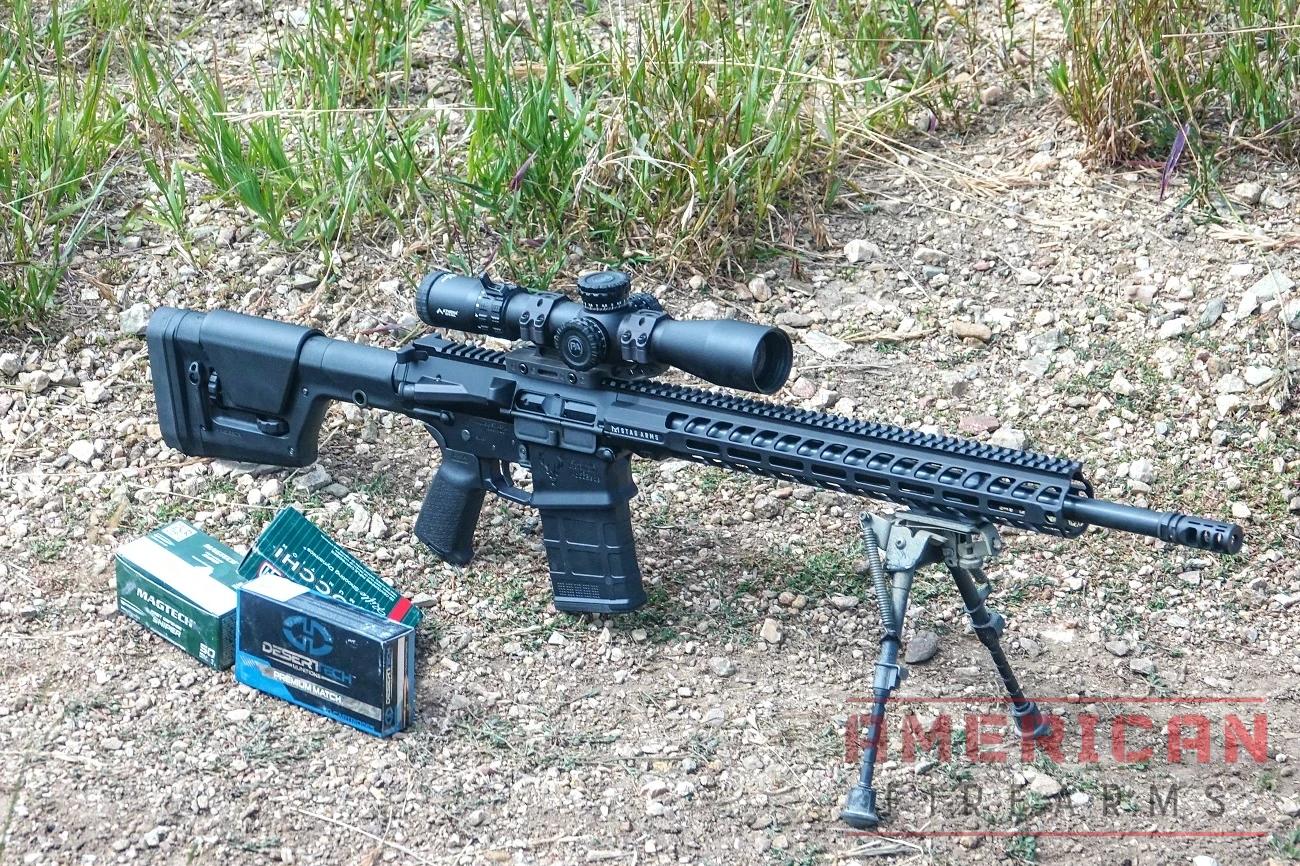
Lower Parts Kit Compatibility Matrix
Universal Components (Work Across All Patterns):
✅ Trigger Groups: All mil-spec and aftermarket triggers
✅ Safety Selectors: Standard and ambidextrous types
✅ Pistol Grips: All AR-15 compatible grips
✅ Buffer Tubes: Standard 1.375″ × 16 TPI threading
✅ Stocks: Any AR-15 compatible stock system
Pattern-Specific Components:
| Component | DPMS Pattern | Armalite Pattern | Compatibility |
|---|---|---|---|
Magazine Release | Often extended for thicker receivers | Standard mil-spec typically works | ❌ Different geometries |
Bolt Catch | DPMS-specific positioning | Armalite-specific positioning | ❌ Different mounting points |
Takedown Pins | Standard .250" diameter | Standard .250" diameter | ✅ Usually compatible |
Pivot Pins | Standard .250" diameter | Standard .250" diameter | ✅ Usually compatible |
Manufacturer-Specific Considerations:
- Aero Precision M5: Includes proprietary magazine release in M5 LPK for optimal function
- PSA PA-10: Best compatibility with PSA-specific parts kit
- LMT MARS-H: Uses enhanced components, standard parts may not optimize performance
- 17 Design Folding: Requires specific buffer system, standard components for everything else
Understanding these compatibility requirements before starting your build prevents costly mistakes and ensures reliable performance. When in doubt, stick within manufacturer ecosystems or consult experienced builders who have tested specific combinations.
The complexity may seem daunting initially, but following these guidelines will result in a reliable, accurate rifle that serves you well for years to come.
History of the AR10
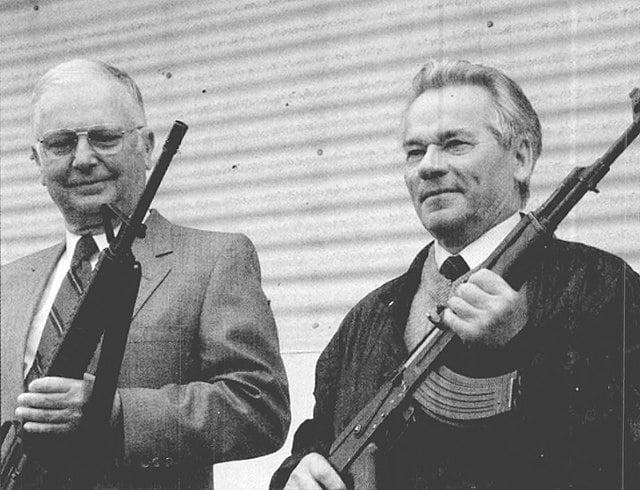
In 1954, George Sullivan, a patent lawyer for Lockheed Corporation, founded the ArmaLite Corporation, an engineering firm with the goal of creating innovative firearm designs that they could then sell to established manufacturers.
Later that year, Eugene Stoner joined Armalite and began work on a select-fire 7.62×51 infantry rifle to replace the aging M1 Garand in trials being held by the US military at Aberdeen Proving Ground.
Dubbed the AR10, this rifle would end up being passed over in those trials, but the overall design would stick around until the modern day in the form of the slimmed-down AR-15 that of course spawned the M16, M4, and many other modern rifles we know and love.
That wouldn’t be the end of the AR-10 though, far from it. The design would go on to be licensed to a Dutch company from 1956 to 1960 when it was sold to Colt Manufacturing Company.
In 1961, Stoner left Armalite to serve as an advisor to Colt on the AR10 and AR15, before moving on to other projects.
In the years following Colt’s acquisition, the AR-10 has only grown in popularity, is one of the most popular rifle platforms around, and is easily the second most popular semi-automatic rifle design you’ll find on the market today in the US (behind the AR15).
Dozens of rifles are built on the AR-10 platform these days and with good reason. It continues to be a solid, dependable choice for shooters who want a semi-automatic battle rifle that can slay deer and ring steel with equal aplomb.
It’s also still around in military use, including variants such as the L129A1, SR-25, M110, and others.
While the original AR10 never really sold well, nor was it adopted immediately, it has a powerful legacy in the AR15 and a special place in the hearts of many shooters to this day.
Why Build Your Own AR10 lower?
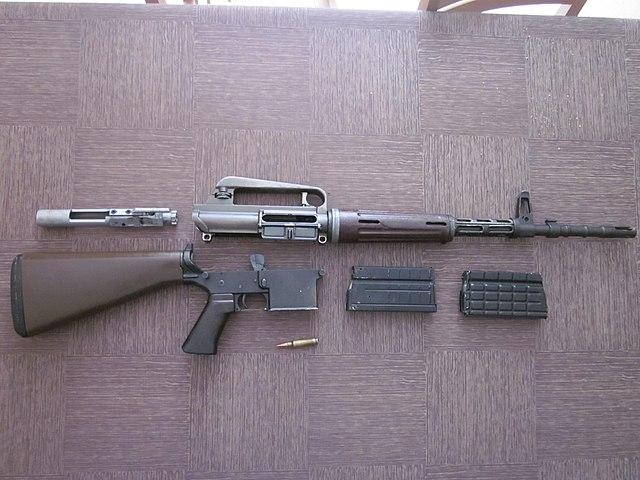
The AR-10’s design, conceived by Eugene Stoner, was revolutionary for its time. However, it wasn’t just the design that made it iconic; it was the spirit of innovation and adaptability.
Building your own AR-10 lower is more than a technical endeavor; it’s a nod to this spirit. It’s about embracing the legacy of a rifle that was once overlooked but rose to prominence due to its unparalleled versatility.
By crafting your own lower, you’re not just assembling a piece of metal; you’re becoming a part of a lineage of firearm enthusiasts who value precision, history, and craftsmanship.
You can always just buy a complete, perfectly good rifle, either off the shelf at your LGS or from your favorite online retailer, but there are some notable benefits to rolling your own with your AR build.
First, there are the customization options, and I don’t just mean little gun parts that offer cosmetic touches like a colorful magazine release.
When you build your own AR10, you can start with a stripped lower receiver that is basically just a hunk of aluminum with holes drilled in the right places, so you can truly choose every single piece that goes into it — literally all the parts — from the upper receiver, LPK, trigger, a specific set screw, etc.
Now, do the individual springs and roll pins matter? Not really, unless your parts supplier doesn’t include enough of them. Things like the trigger, grip, fire-selector, and a bolt or ambi magazine release are your main interface with the rifle.
These control surfaces have a huge impact on how well you can shoot and manipulate your guns, and choosing the best ones will always be a very subjective endeavor — unlike things like barrel length or twist rate.
When you build your guns from the ground up, whether you use a drill press or just the takedown pins, you can choose all of these bits individually and truly tailor them to your own preferences, which will have an immensely positive effect on the rifle’s performance in your hands.
Having this flexibility to build your own rifle is the main reason we suggest building over buying, but it can also save you money in the long run. Most stock triggers are crap, and even the ones in otherwise good rifles can underperform, which was our take on our DDM4 review. Great rifle, meh trigger.
This is just one part that many, many shooters will want to upgrade later anyway, so why go with the inferior product to start with? Buy once, cry once, and save yourself the extra time and money.
You will also come out of this experience with a much better idea of what aftermarket parts you want to buy and how to upgrade them going forward. Adding ambi controls like an ambidextrous bolt release, for example, will become a lot easier if you know how to build the rifle from the ground up.
Must-Have AR10 Lower Features
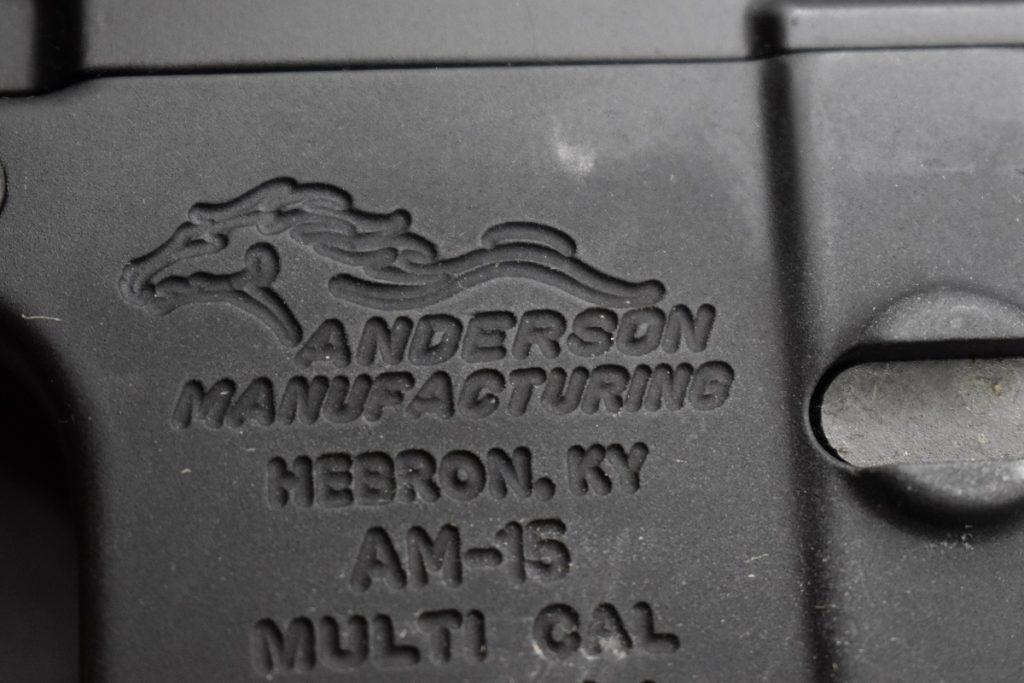
When you’re choosing your lower, there are a few things you should keep in mind. This applies to choosing one from our recommendations as well as ordering off the menu.
1. Go With a Known & Reputable Brand
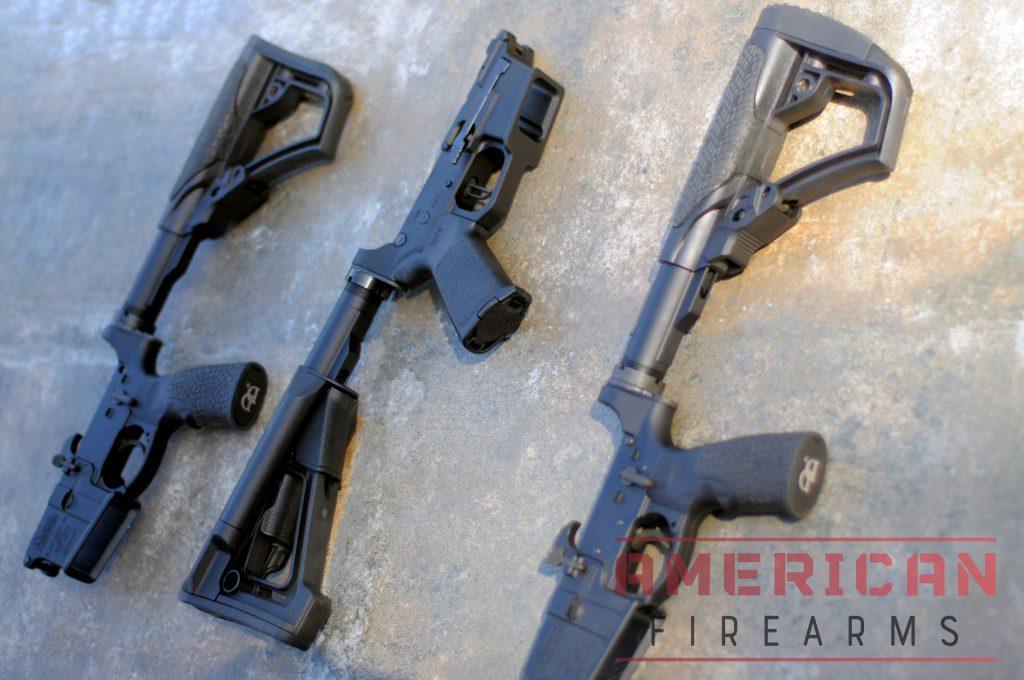
First and foremost, I’ll always recommend going with a known and reputable brand that isn’t just churning out junk. There isn’t as much crap out there in the world of AR10 lowers as there is on the AR15 side of things, but there’s still junk ready to be bought by the unwary.
In general, the manufacturers on this list are solid, as are Seekins Precision, LWRCI, Daniel Defense, and DPMS. There are others as well, but in general, I only like to recommend products I have some hands-on experience with.
2. Billet vs Forged Aluminum
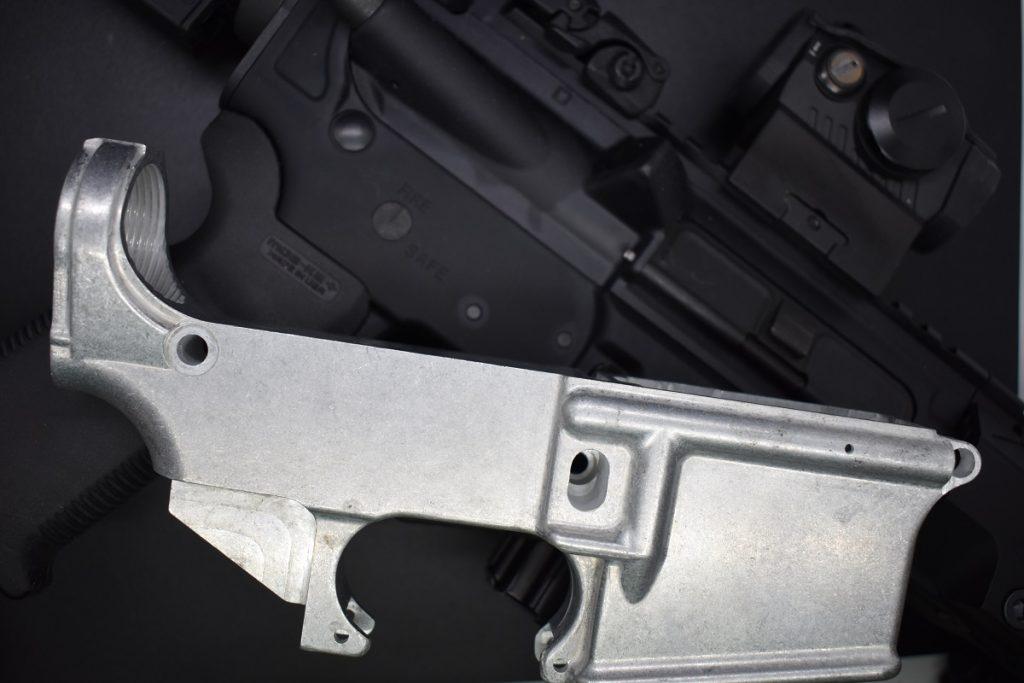
Another thing to think about is whether you want to go with forged or billet aluminum.
Now, this is a topic that will get most people all up in arms in comment sections across the internet, but there are really only two things you need to know about the subject.
First, forged lower receivers are cheaper and slightly stronger than billet receivers. On the other hand, a billet receiver is 90% as strong, and still far stronger than you’ll ever need your AR lower to actually be. Remember there are polymer lowers out there that work perfectly fine.
The other big difference is that billet lowers run through a machining process that delivers a higher level of precision and can be customized by the manufacturer much more than a forged option. If you’re looking for something a little different than mil-spec, this is the way to go for sure.
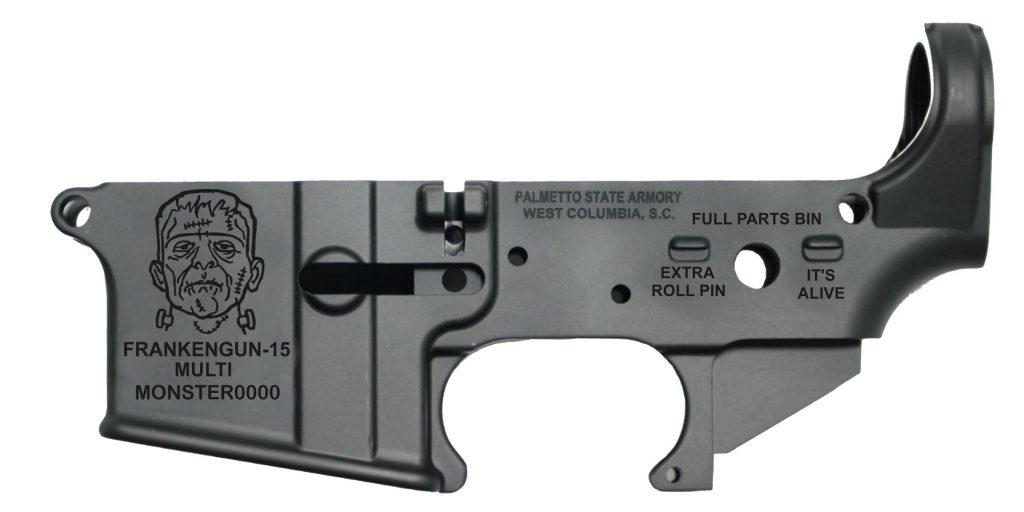
Billet lowers will also generally have slightly better fitment within the same manufacturer’s lineup, so if you get a billet upper and lower from the same company, you can be sure everything will lineup and lockup nice and tight, with no gaps or wobble.
At the end of the day, forged vs billet comes down to your preference and budget, and whether or not you care about things like an integral trigger guard and extra customization, which can only really be had with billet offerings, generally speaking.
An integrated trigger guard can also be a positive or a negative thing, depending on how much room it offers, especially if you often shoot with gloves, you keep that in mind as well.
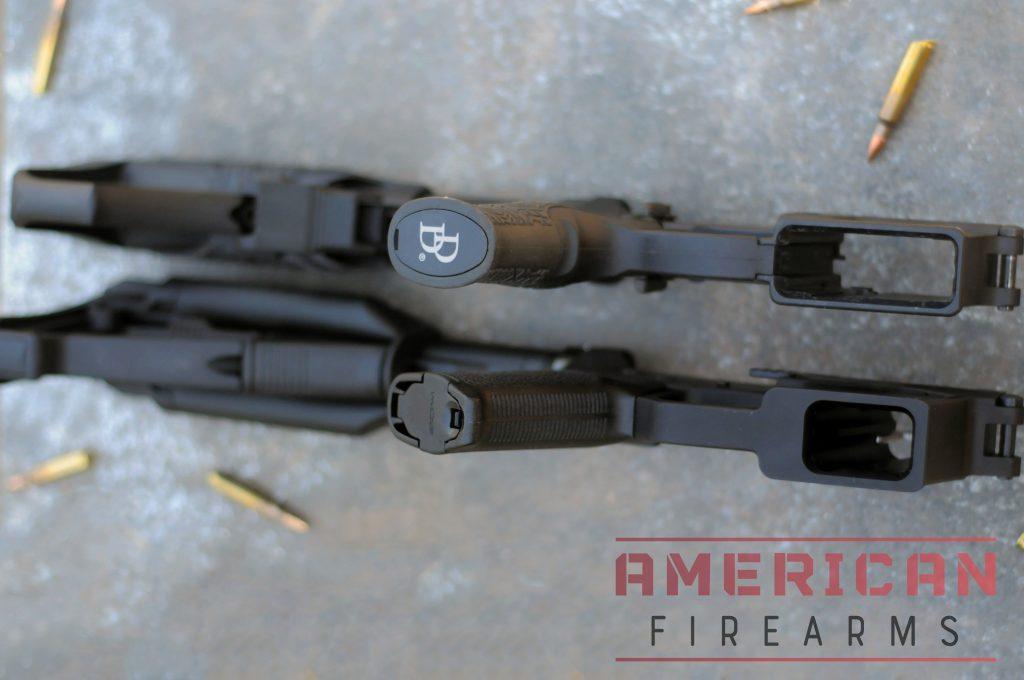
Types of AR10 Lowers
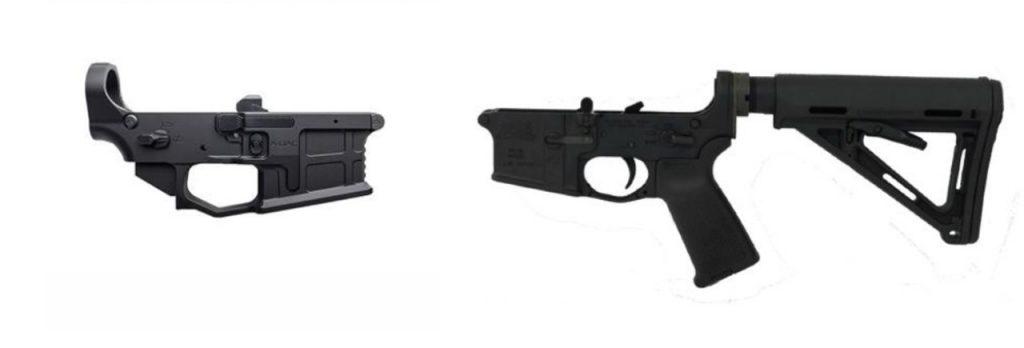
There are also a few different types of AR-10 lower floating around, and you’ll want to understand the difference, especially if you’re going to be buying your upper separately, as not all parts are interchangeable.
DPMS LR-308 VS Armalite AR-10
The most important thing is to figure out whether you’re looking for a DPMS-style lower, or an Armalite-style lower (or something else like an HK417 or the new Brownell’s BRN-10).
These lowers have parts that are not compatible, and you can’t mix and match uppers.
You can’t put DPSM-pattern parts in an Armalite-style rifle and vice versa, so it’s important to get the right buffer tubes, gas blocks & tubes, bolt catches, and so on.
There are a few interchangeable small parts, like trigger springs, takedown pins, roll pins, threaded brass inserts for things like the bolt catch pin hole, and so on, but make sure you do your research before you try to swap in parts from the other style of rifle.
As far as choosing between the two styles, the newer DPMS option is generally the way to go, and you’ll see it sold as LR-308, AR-308, and a host of other names. This is the most common option by far and is generally cheaper to boot.
Of course, if you want a traditional, classic AR-10, then you’ll have to get the AR-10 style lower and a compatible upper. I’ve never seen the point in going this route, but it’s there if it’s something you’re interested in, or you just want something different.
This is also probably the way you’ll want to go if you’re looking at building an SR-25/ MK11 or another military rifle clone.
For the average shooter though, go the AR-308 route. It’s easier, it’ll give you many more options to choose from, and it’ll even cost you less.
Stripped vs Complete Lowers
Some terms you’ll also see floating around are “stripped”, and “complete”. These refer to the additional parts that may or may not come already installed on your lower.
First up, stripped means you’re getting a bare receiver that has been finished (anodized or Cerakoted) and nothing else. No springs, no pins, no trigger, nothing at all installed.
If you go this route, you’ll have to source parts yourself, which may or may not be a good thing depending on how much actual building you want to do. You will get (or have) to choose all your own parts, though there are numerous parts kits available that’ll have everything you need.
A complete lower means that everything is there and this lower is ready to be installed with as little work as possible. Sometimes the furniture (grip and stock) is installed as well. This is the way to go if you don’t want to build everything yourself and just want to purchase something that’s more or less ready to go without any extra work.
This clear delineation makes the choice pretty easy from my perspective.
What You Get for Your Money
- $<150: This range will get you a stripped lower with no extra parts. Sometimes you can get some very cheap blemished options which will usually be marked BLEM. These are a great way to build a rifle on the cheap, and will only have mild cosmetic damage that you’ll hardly notice. Plus — more cash for ammo or spare mags!
- $150-$350: This is the realm of complete uppers that have crappy to decent parts already installed, though you may still need to add a grip and stock. You’ll see brands like Lewis Machine,
- $350+: Much further past $350, you’re getting into the realm of premium components like upgraded triggers and maybe some fancy customization as well. This will typically be billet uppers with furniture pre-installed from brands like Noveske and Glen Seekins’ own Seekins Precision.
$<150: This range will get you a stripped lower with no extra parts. Sometimes you can get some very cheap blemished options which will usually be marked BLEM. These are a great way to build a rifle on the cheap, and will only have mild cosmetic damage that you’ll hardly notice. Plus — more cash for ammo or spare mags!
$150-$350: This is the realm of complete uppers that have crappy to decent parts already installed, though you may still need to add a grip and stock. You’ll see brands like Lewis Machine,
$350+: Much further past $350, you’re getting into the realm of premium components like upgraded triggers and maybe some fancy customization as well. This will typically be billet uppers with furniture pre-installed from brands like Noveske and Glen Seekins’ own Seekins Precision.
Further Reading
- NRA Blog. (2017) A Brief History of the AR-10, the AR-15’s ‘Big Brother’
- American Rifleman. (2018) The AR-10 Story
Updated
Sign up for our newsletter
Get discounts from top brands and our latest reviews!

